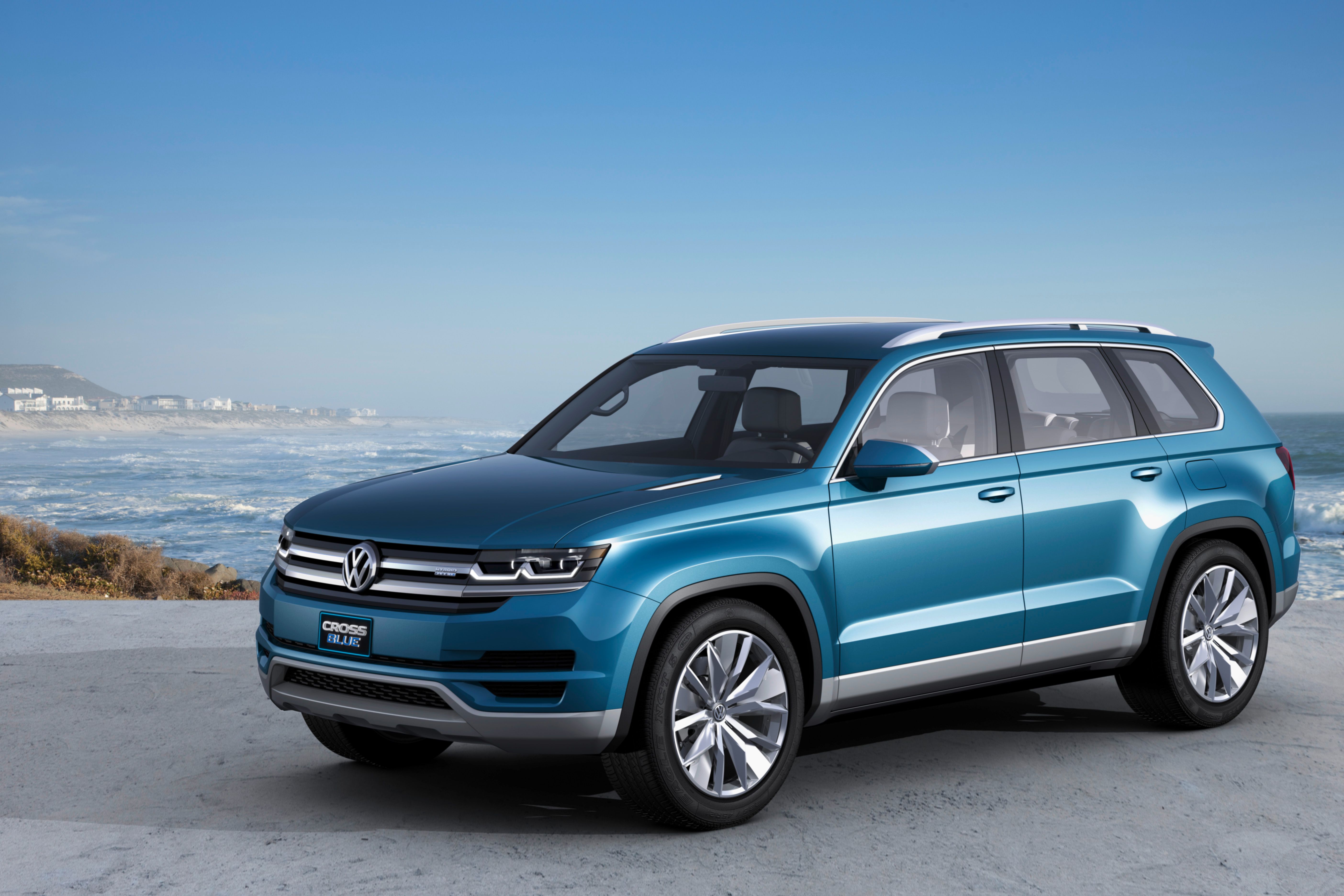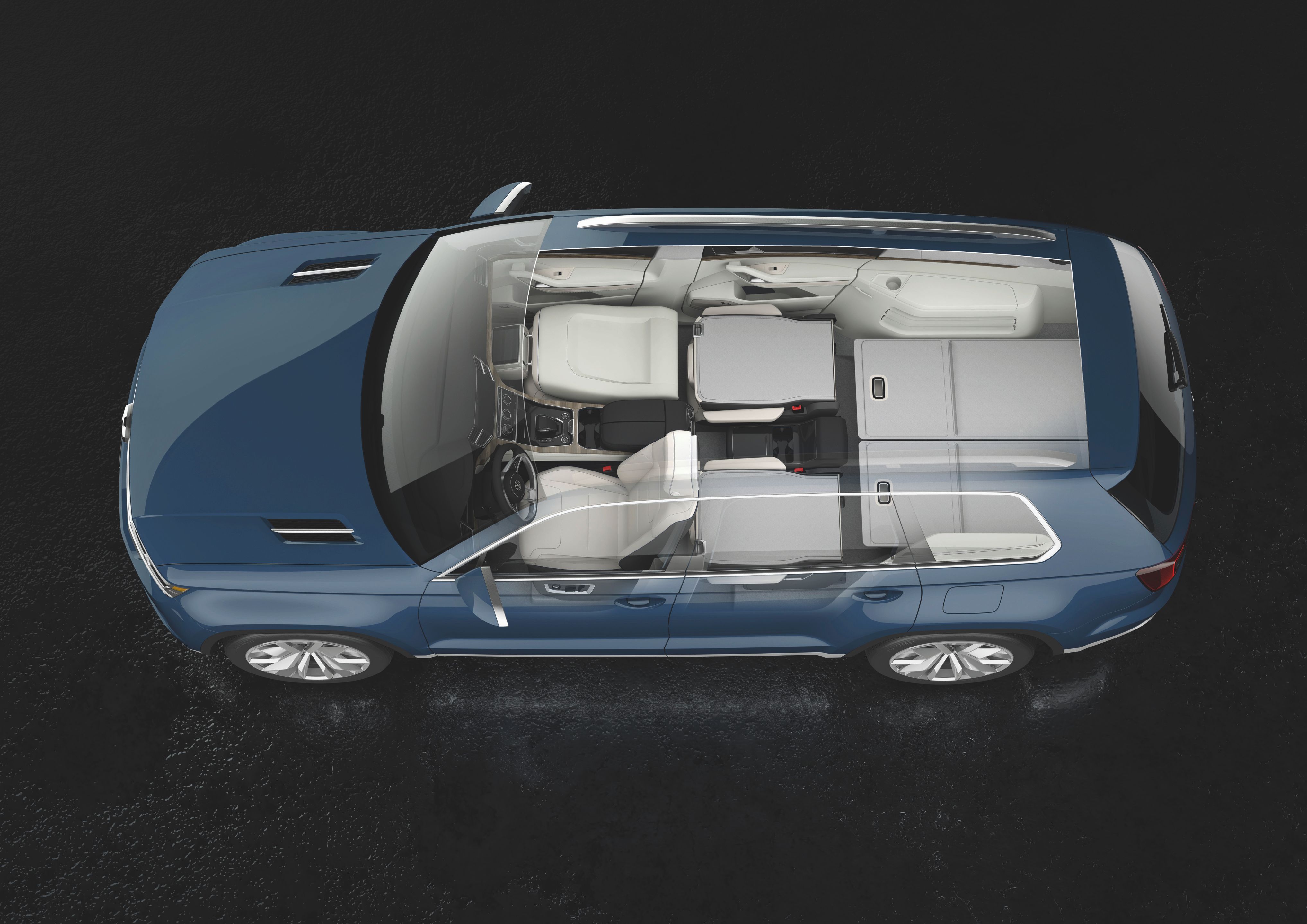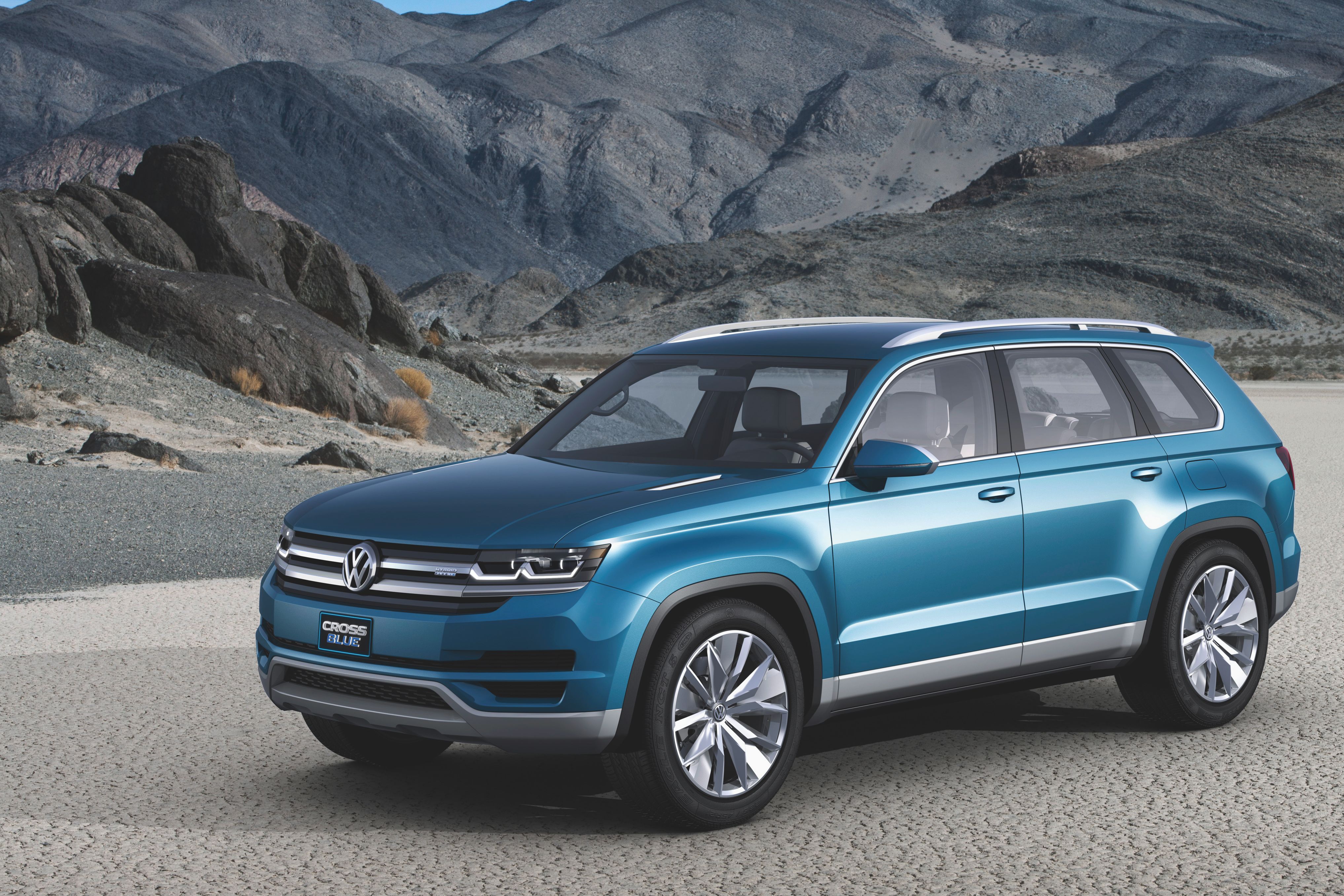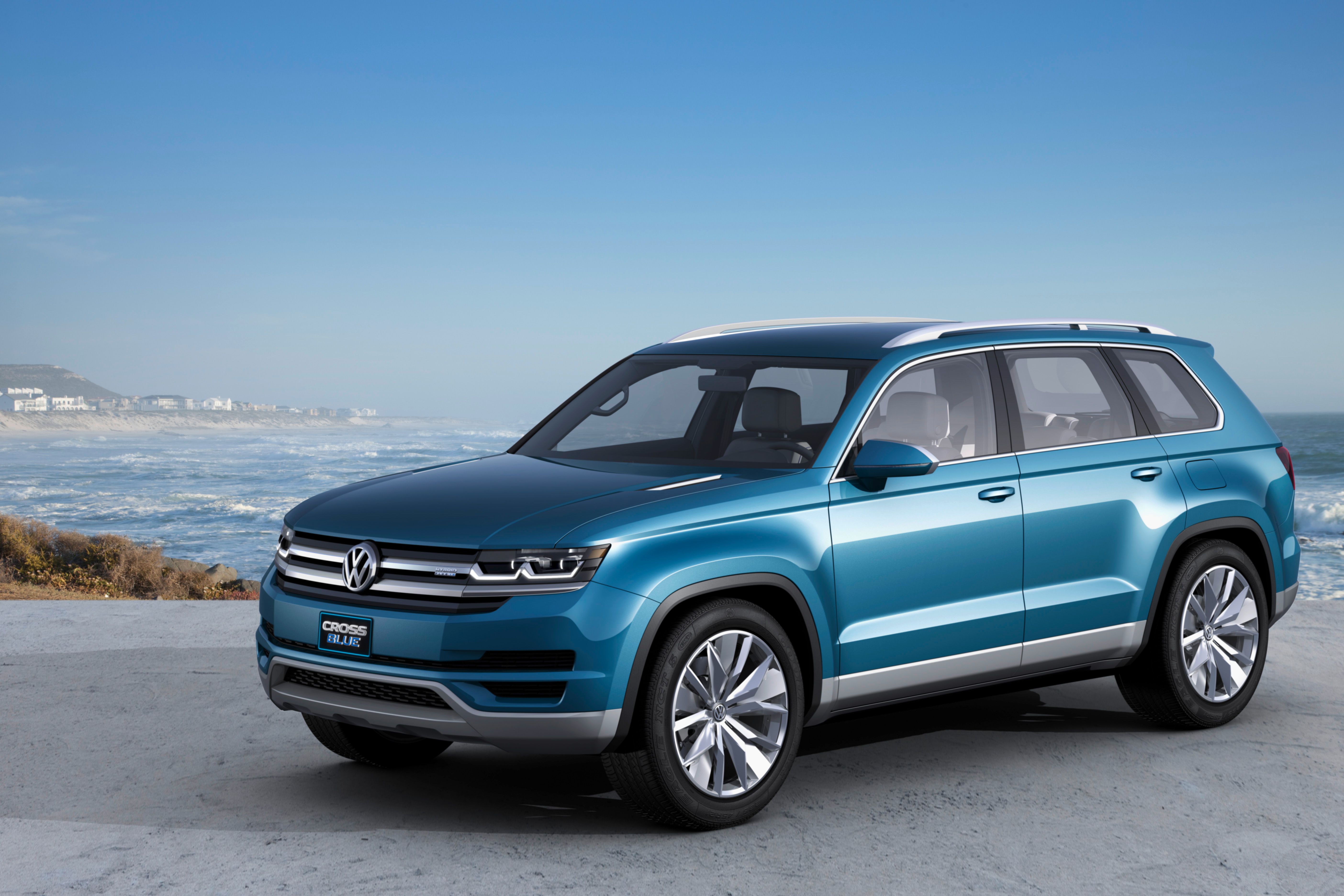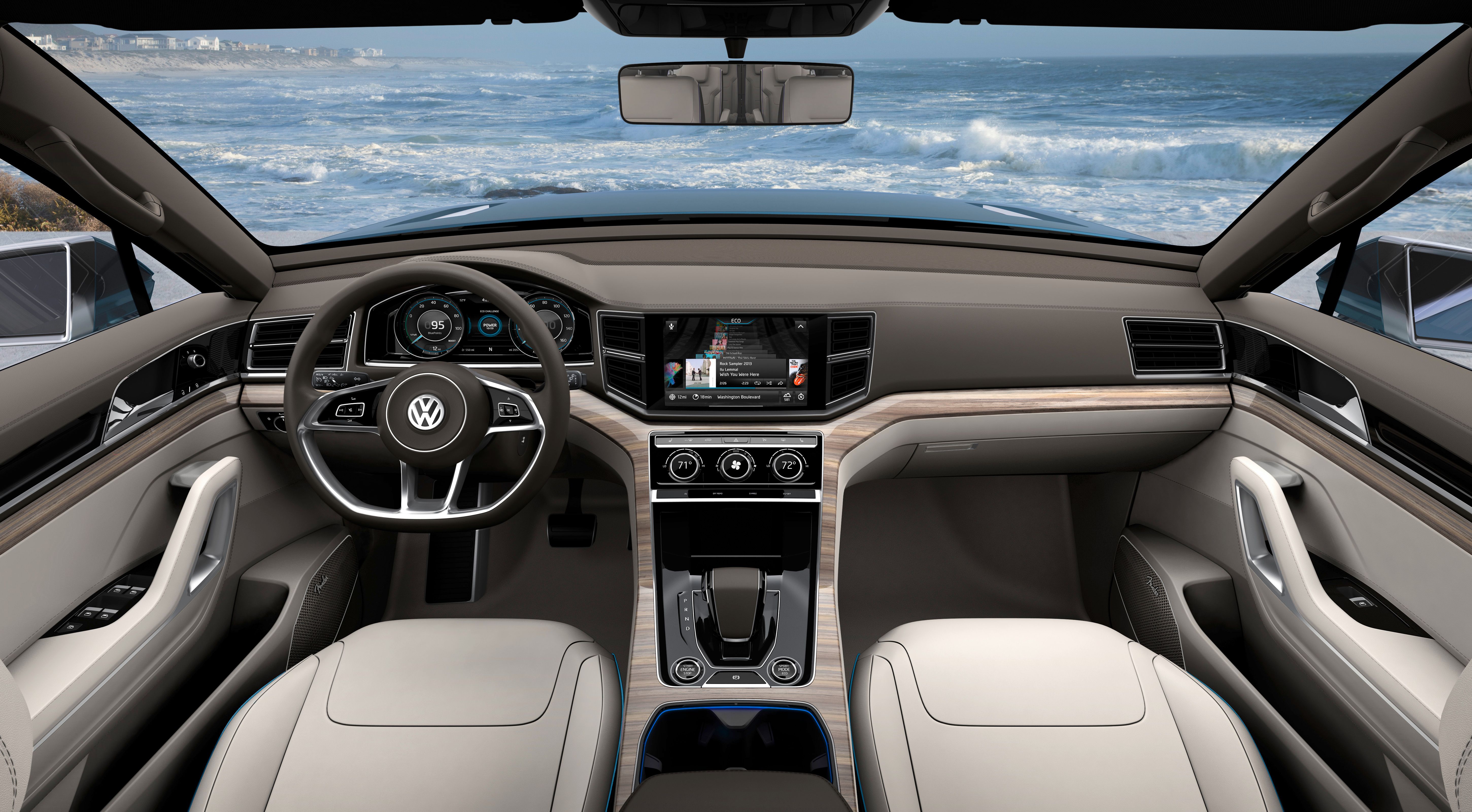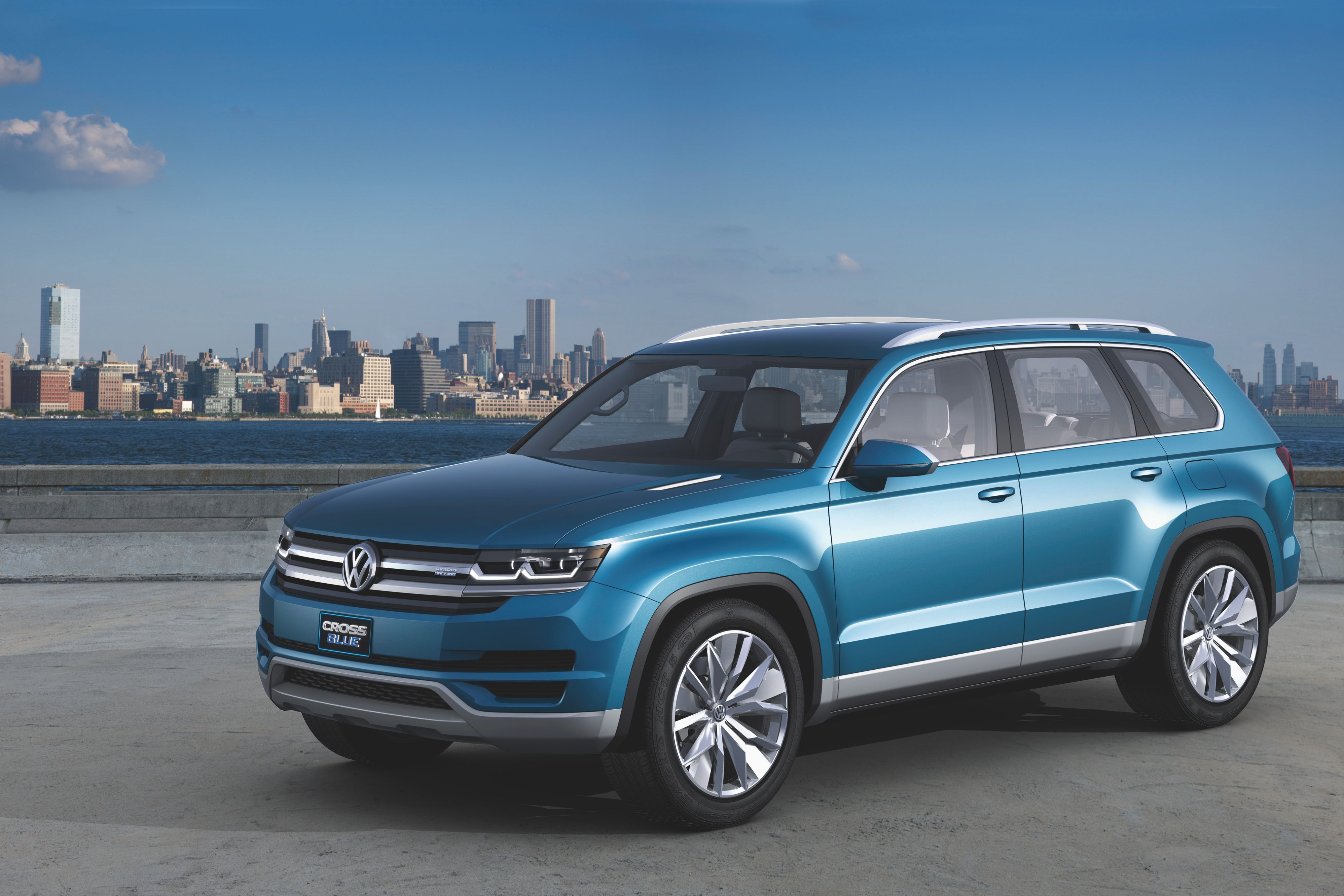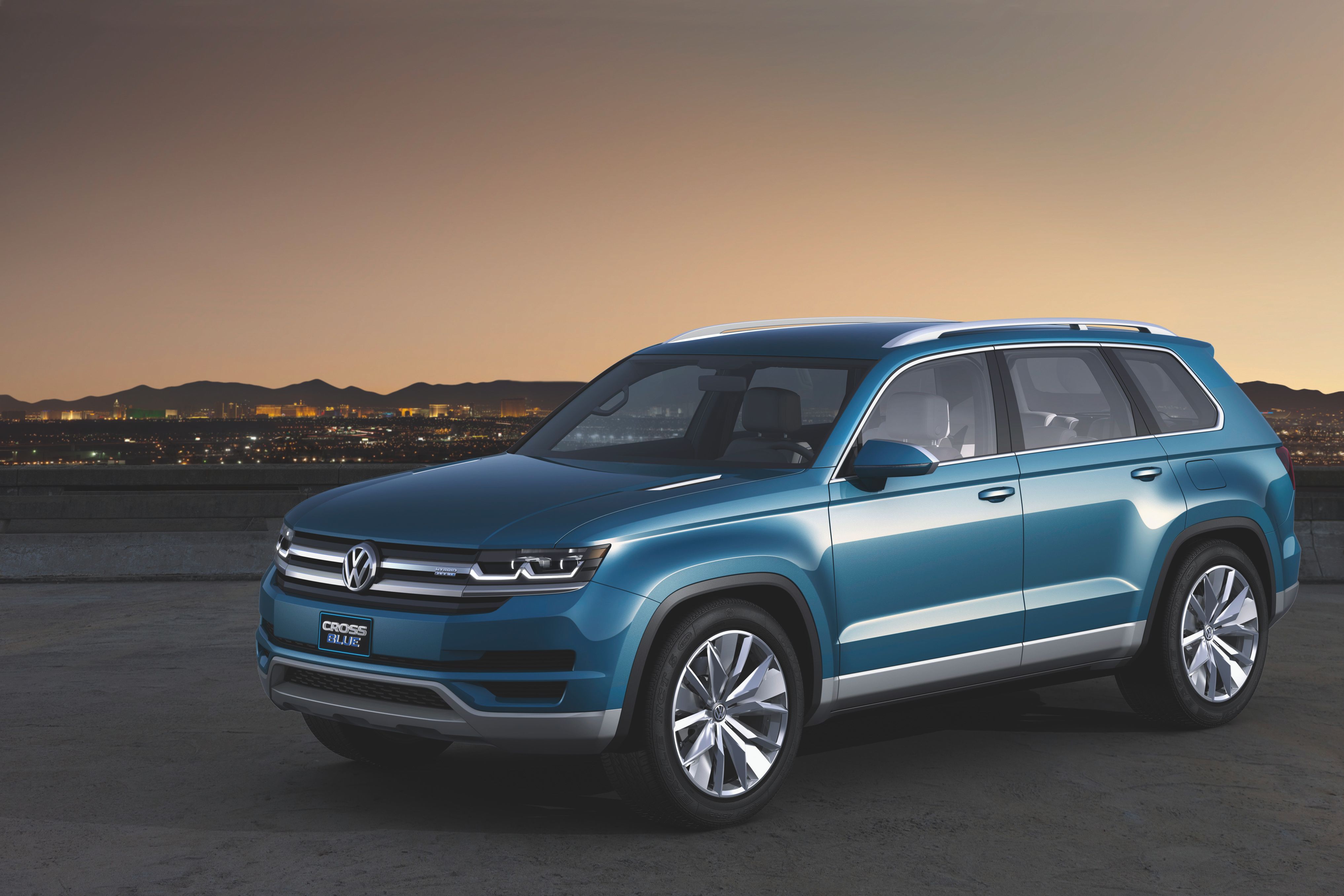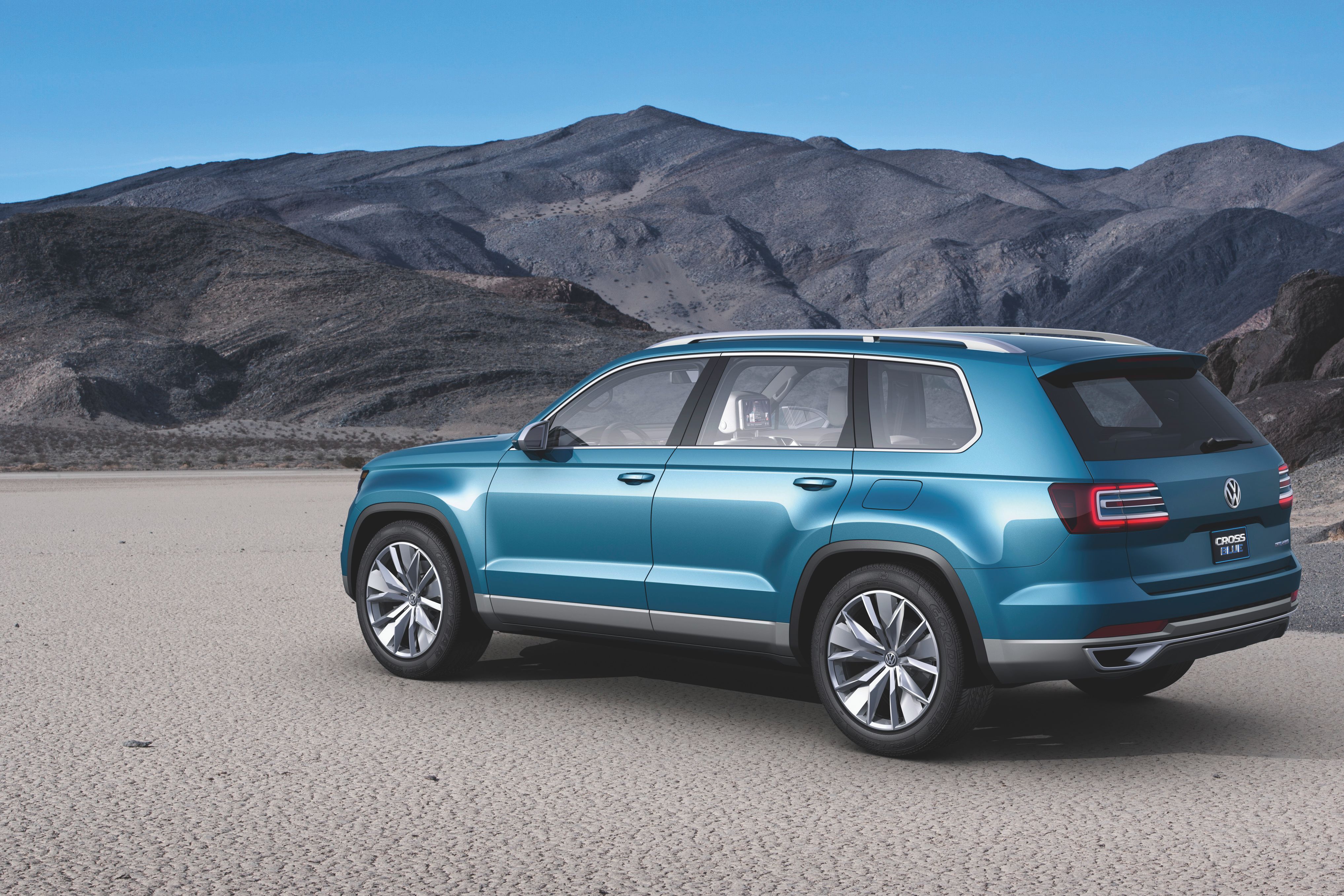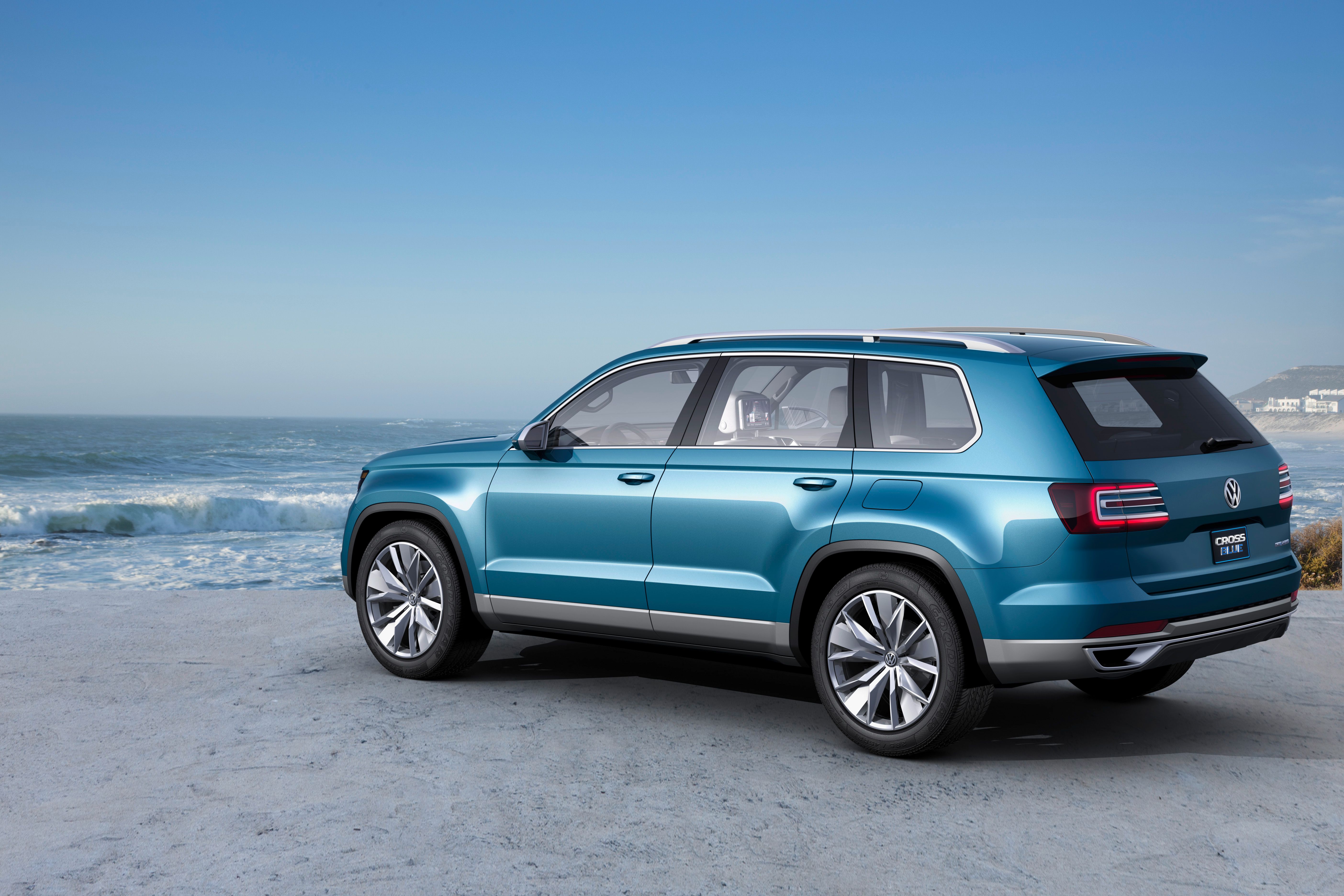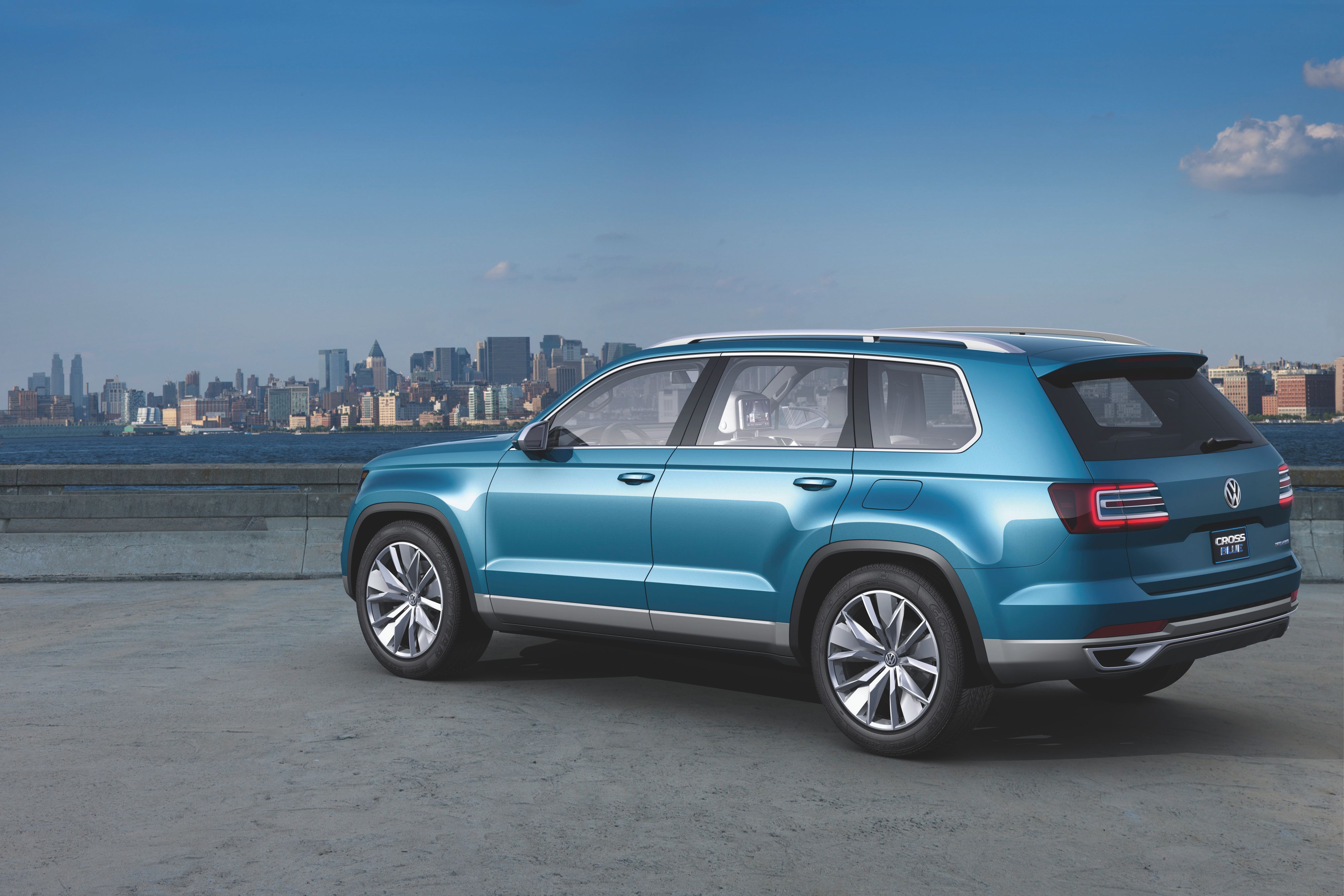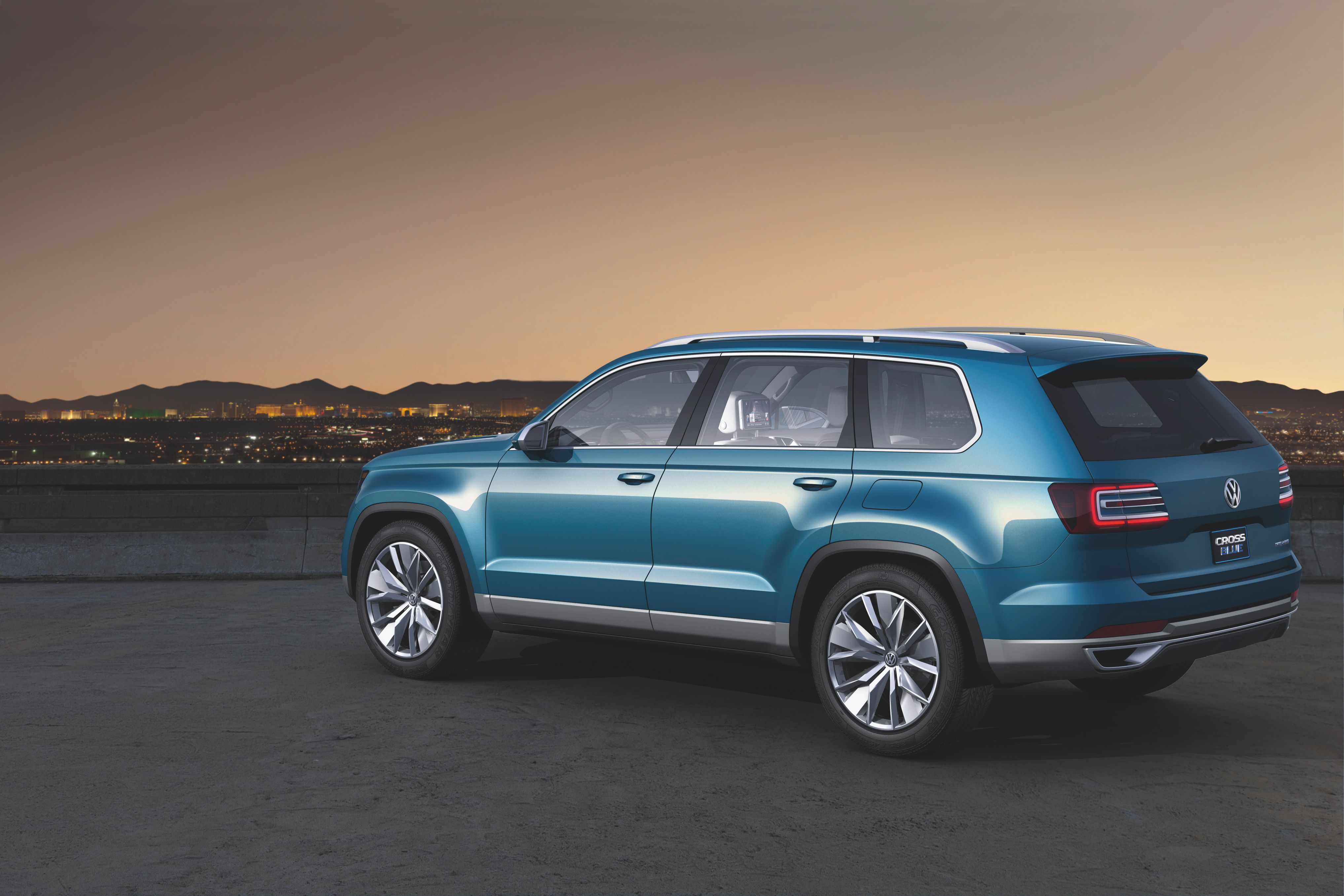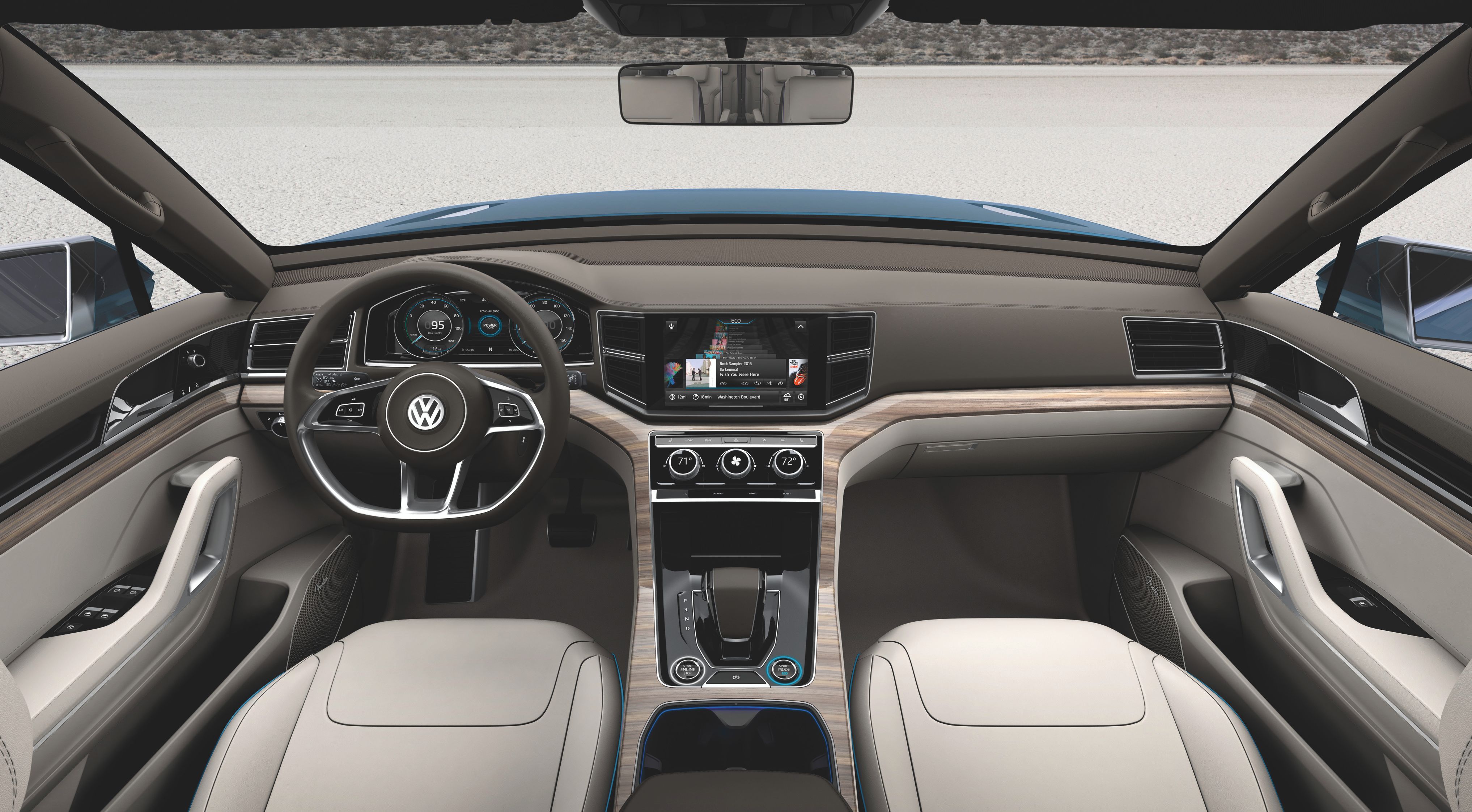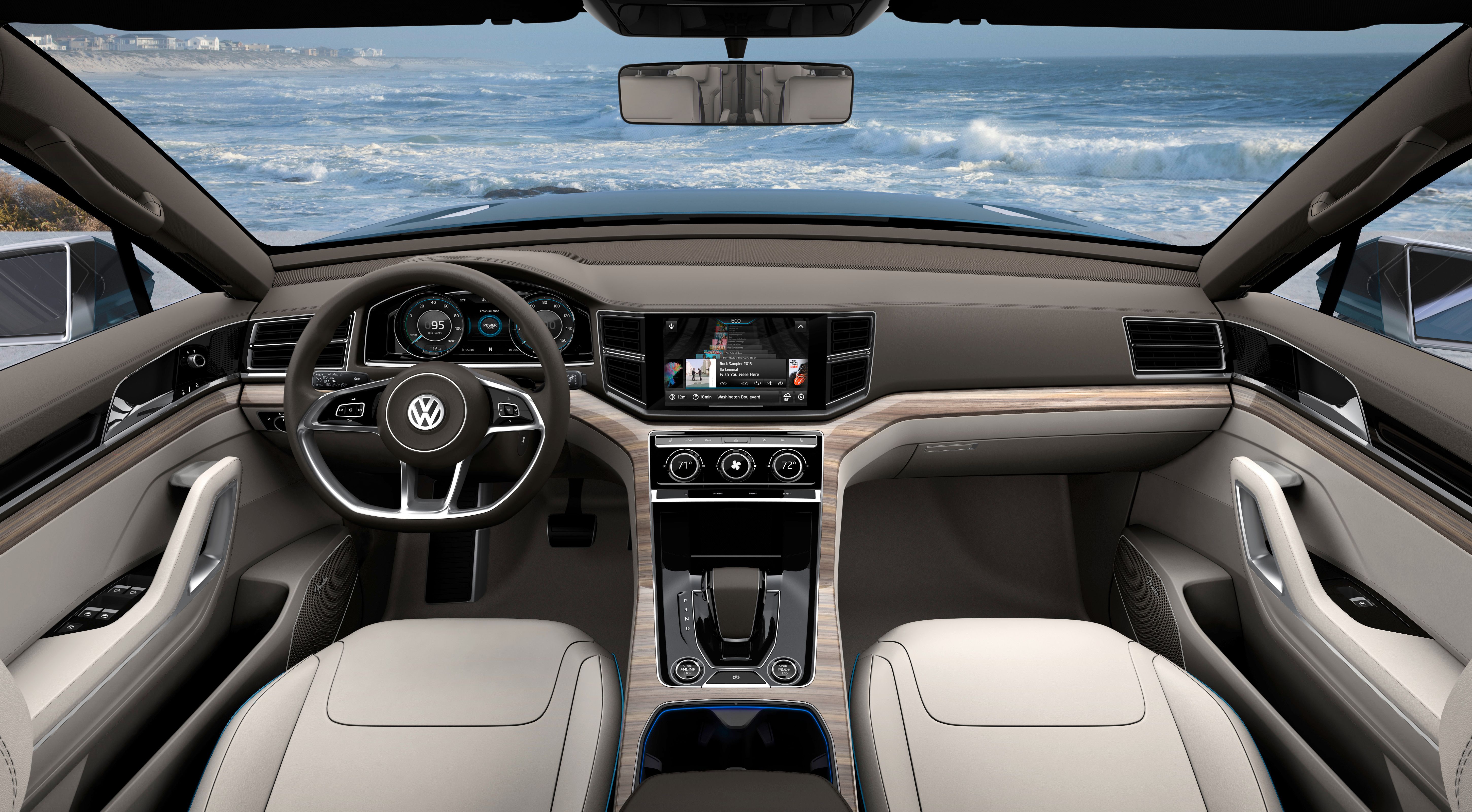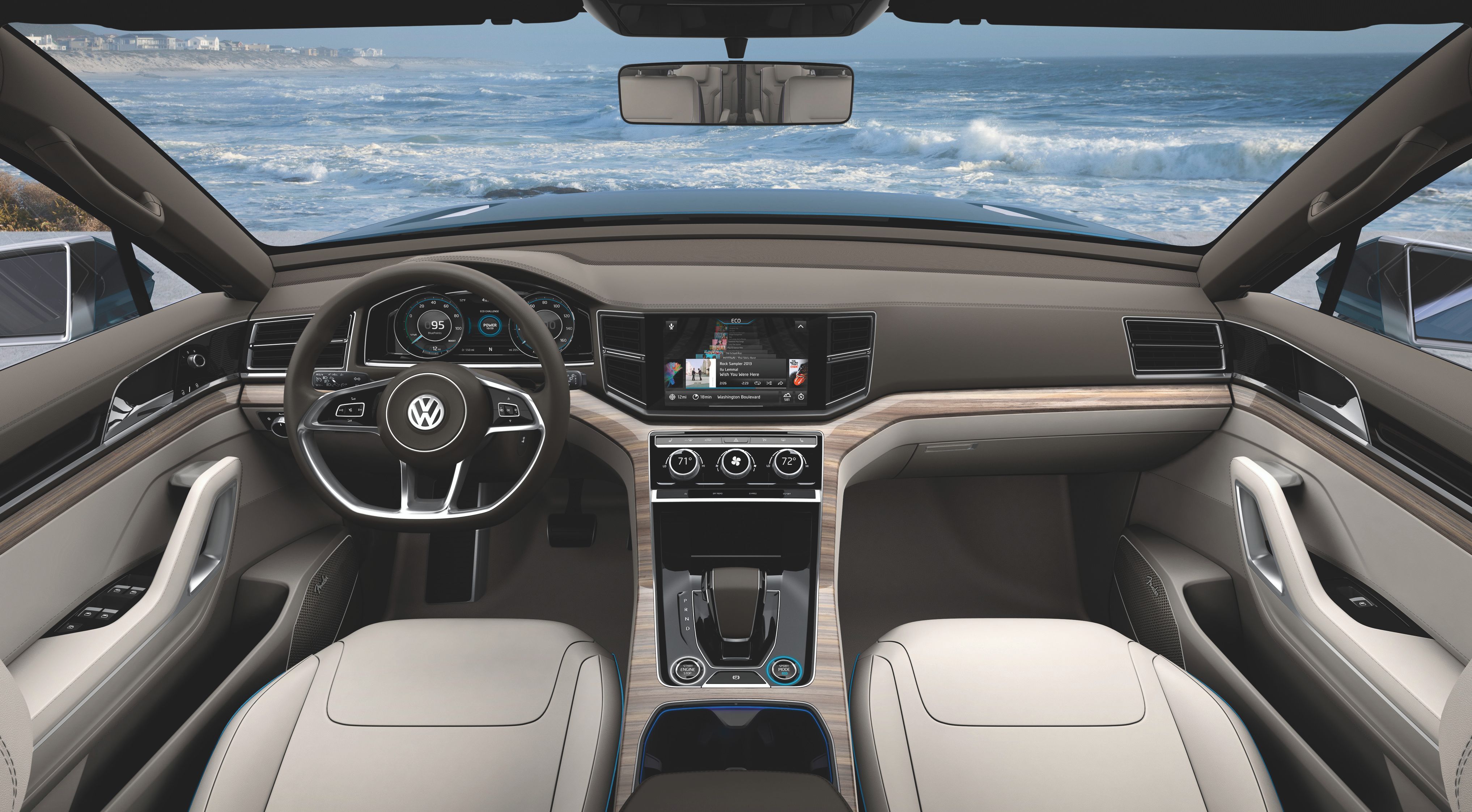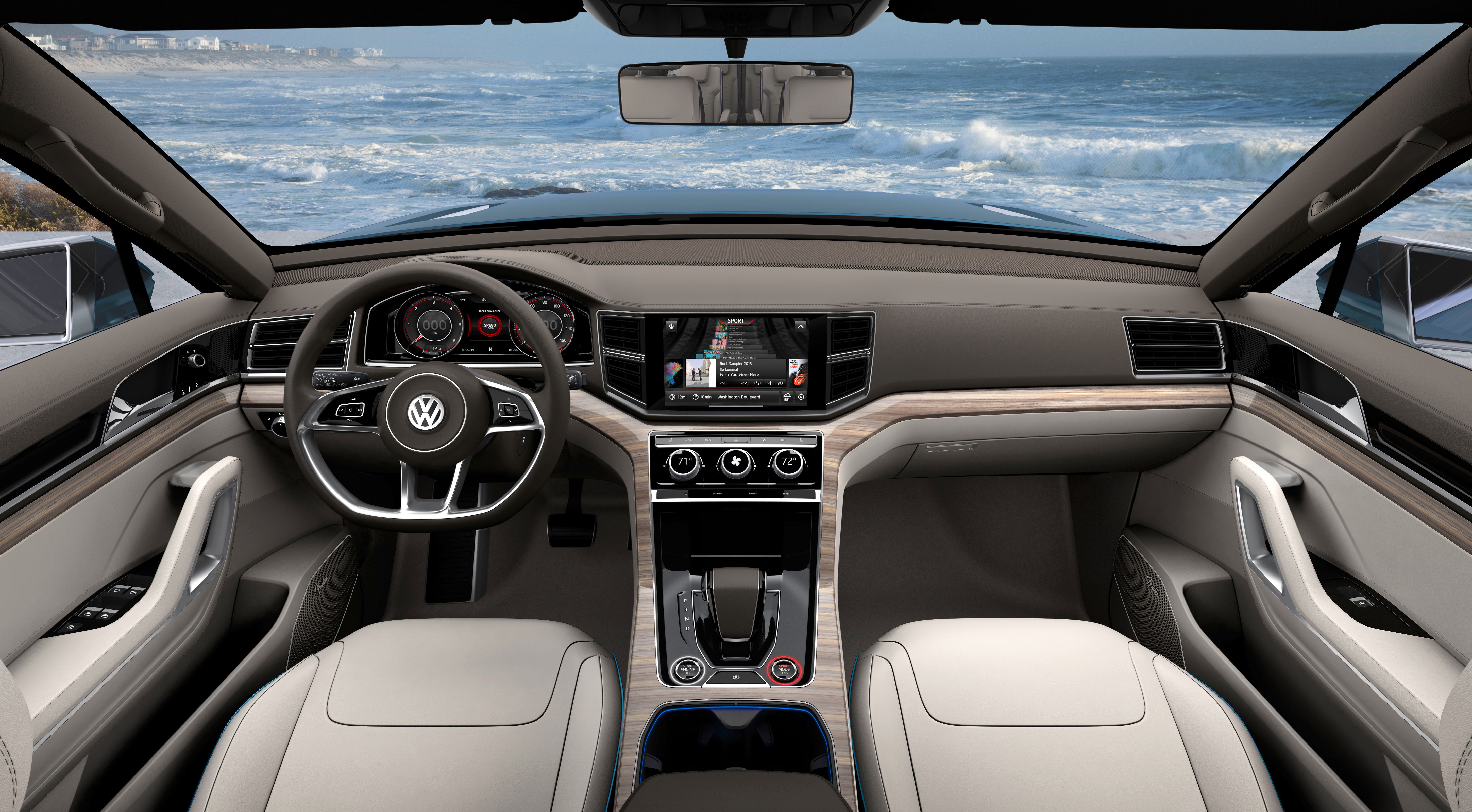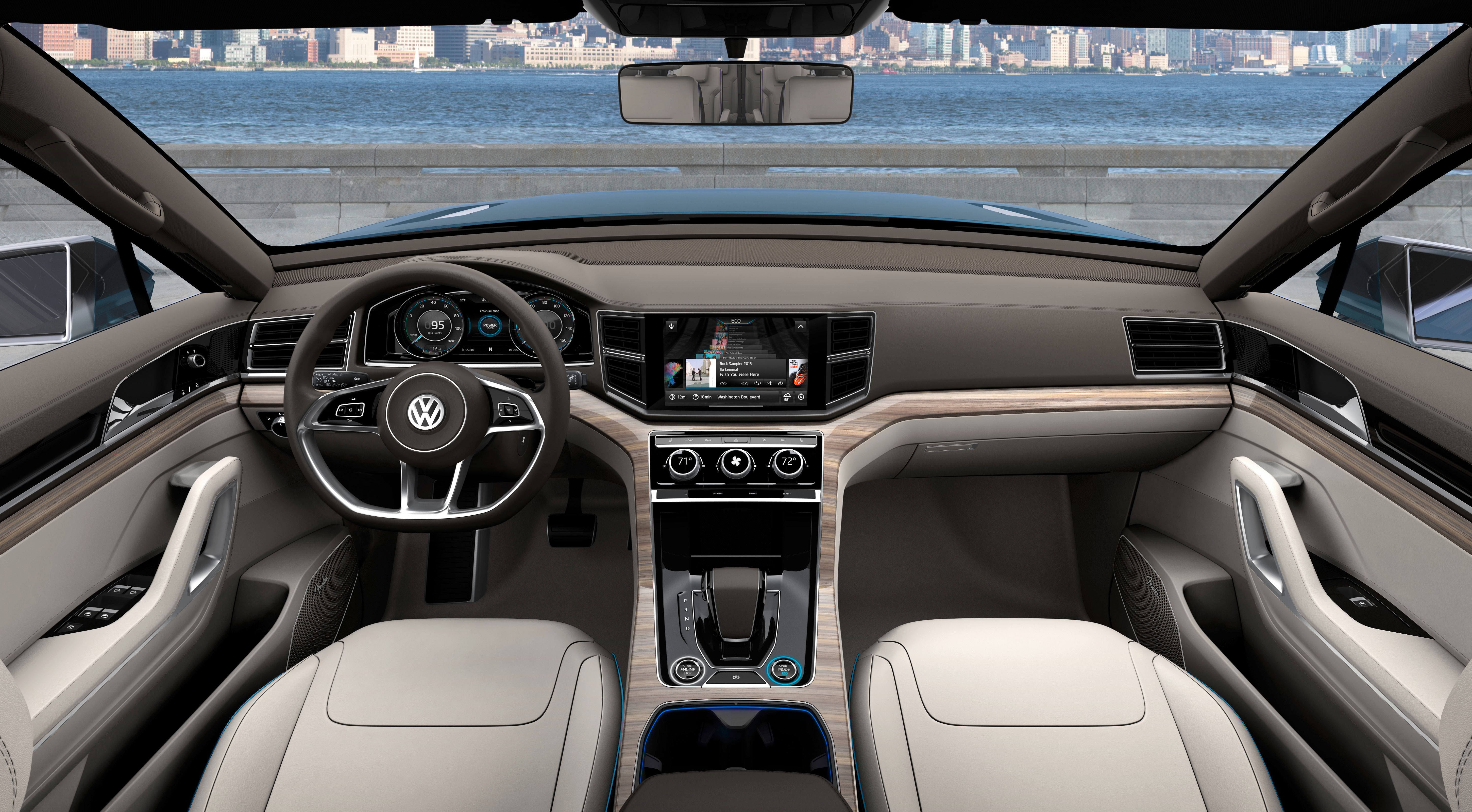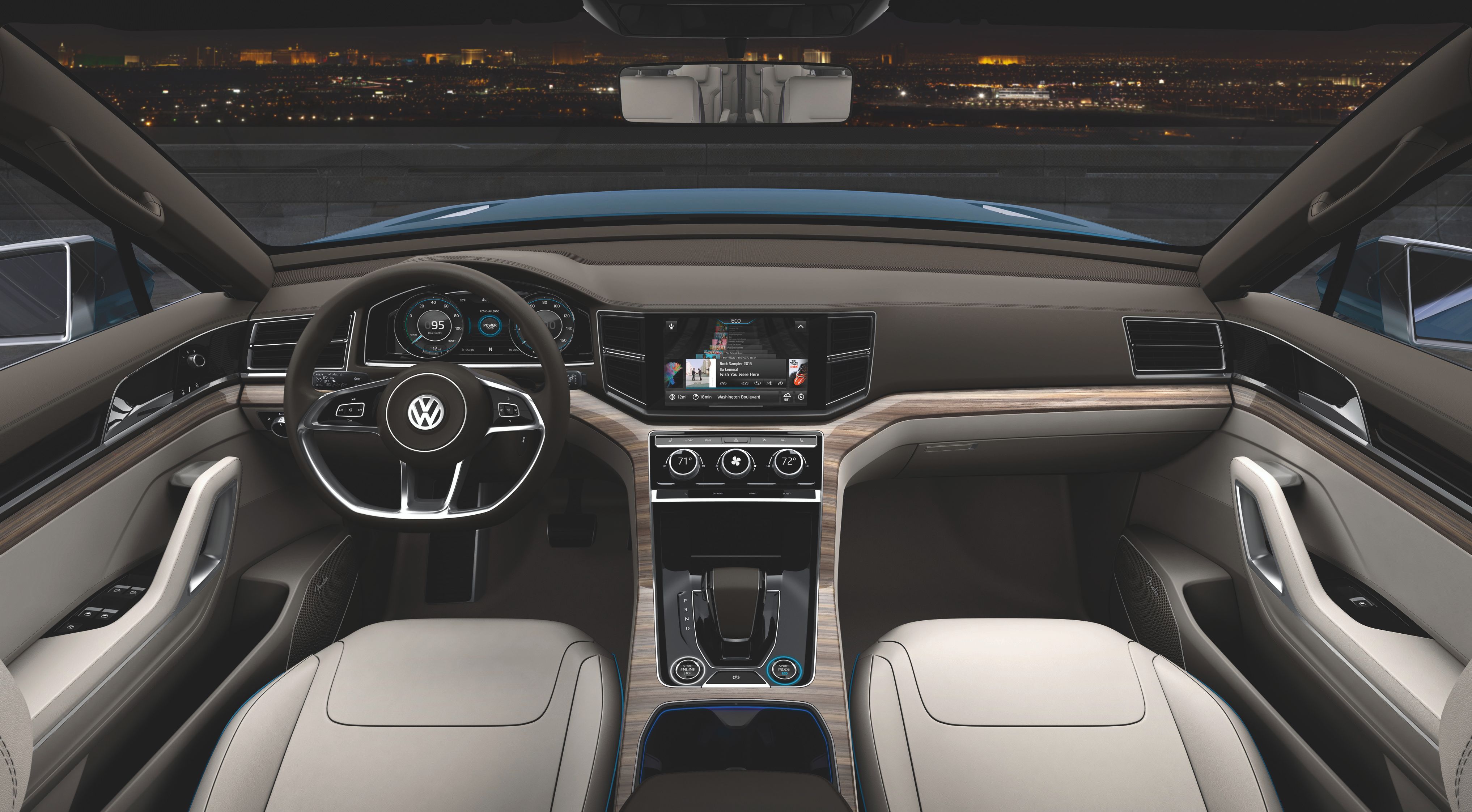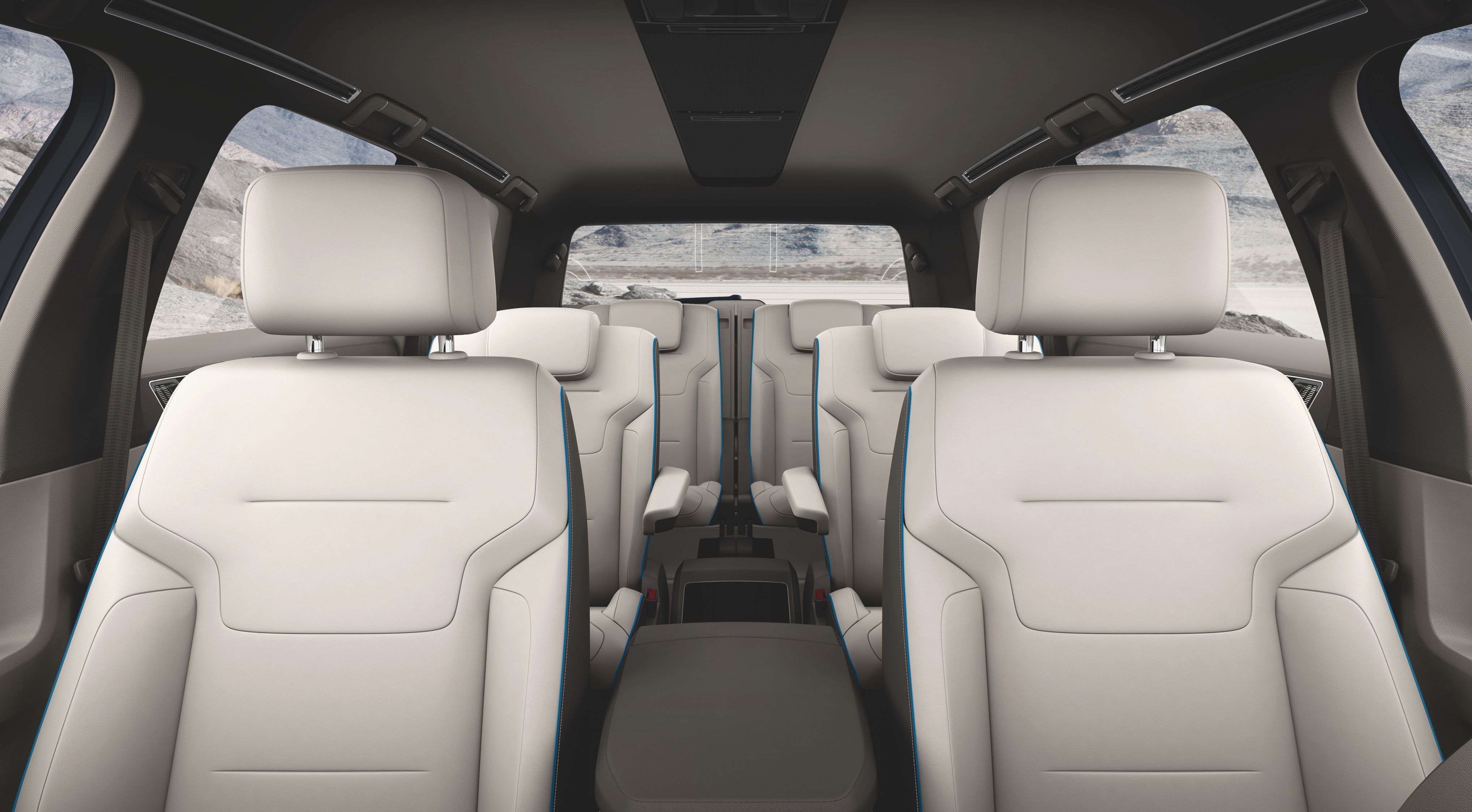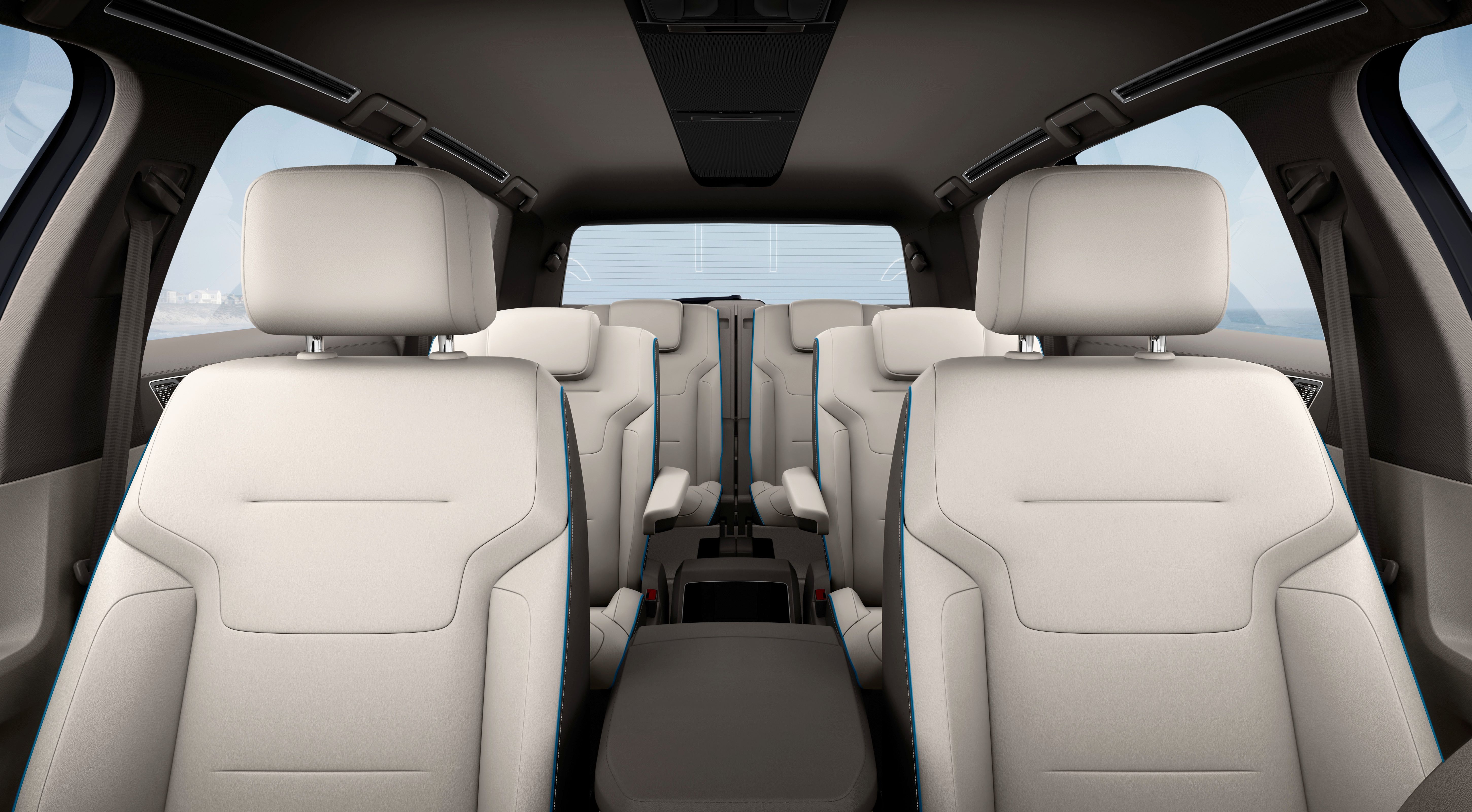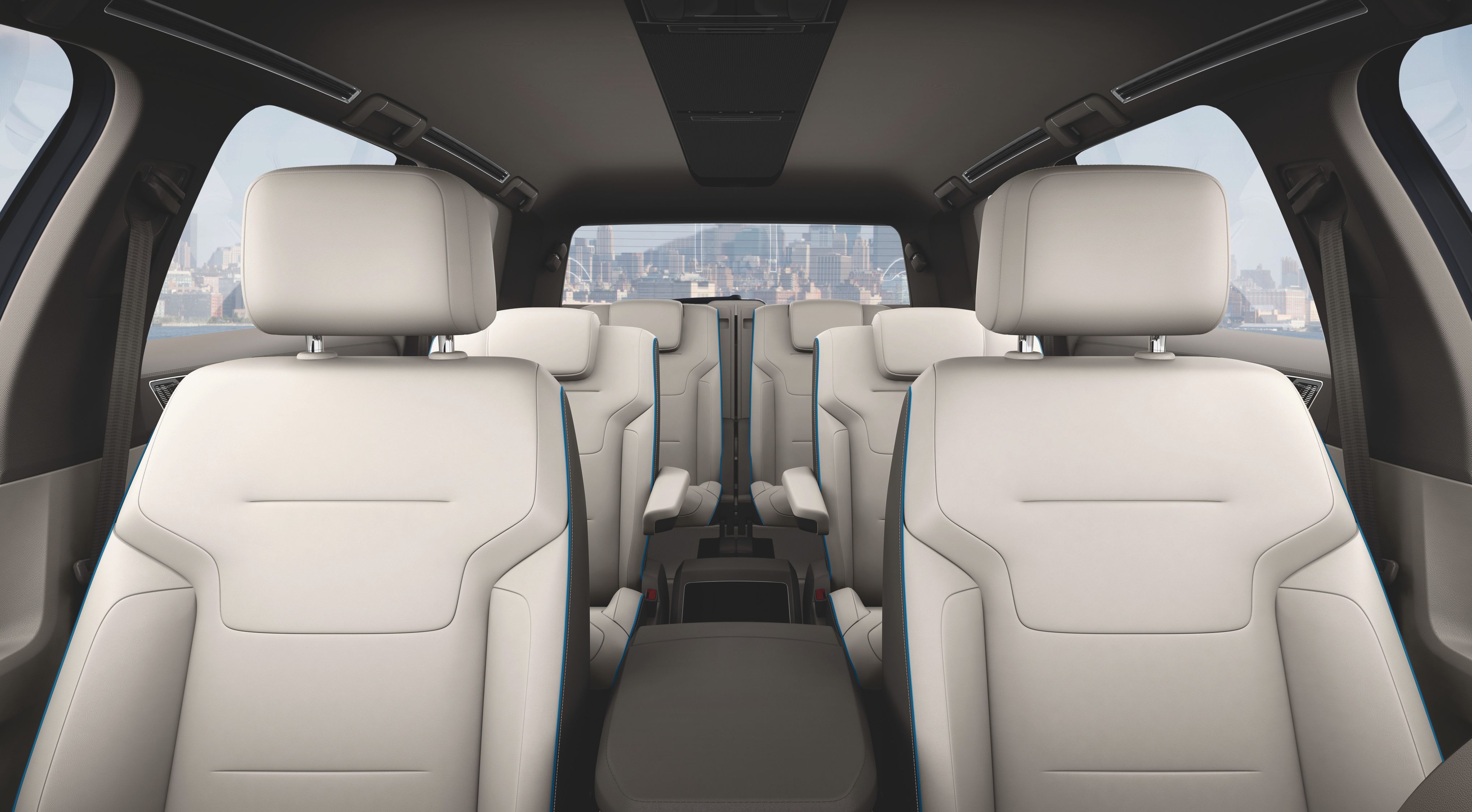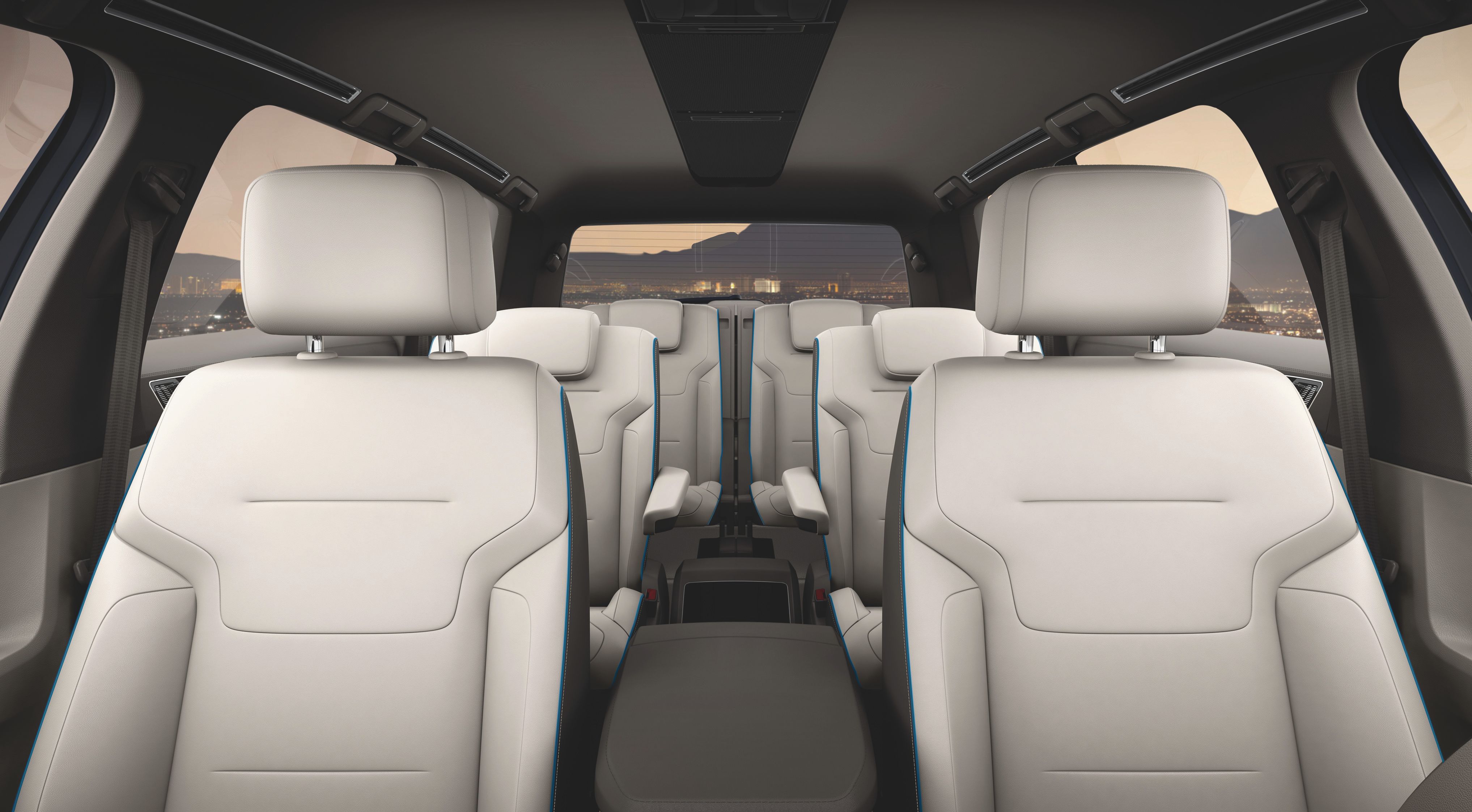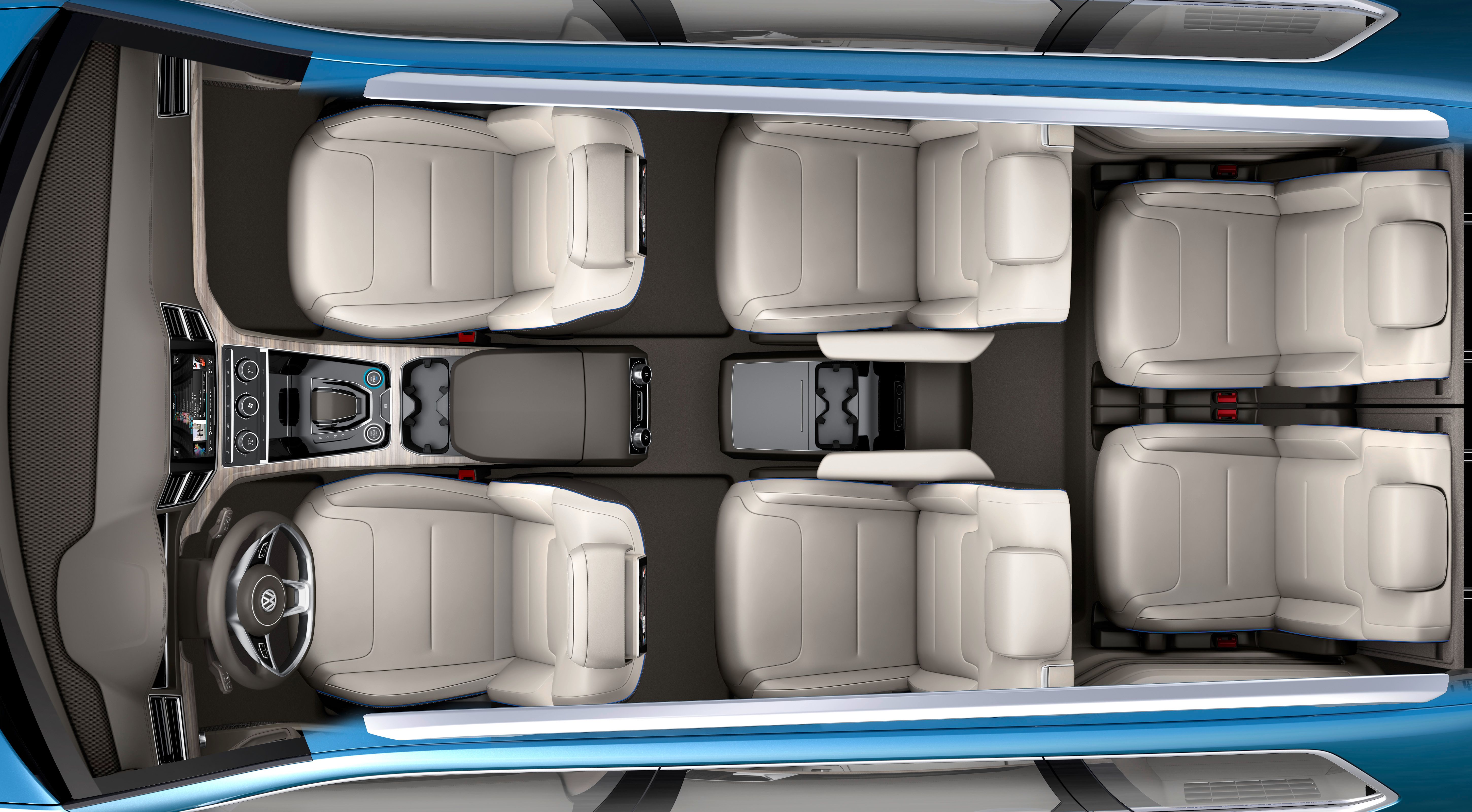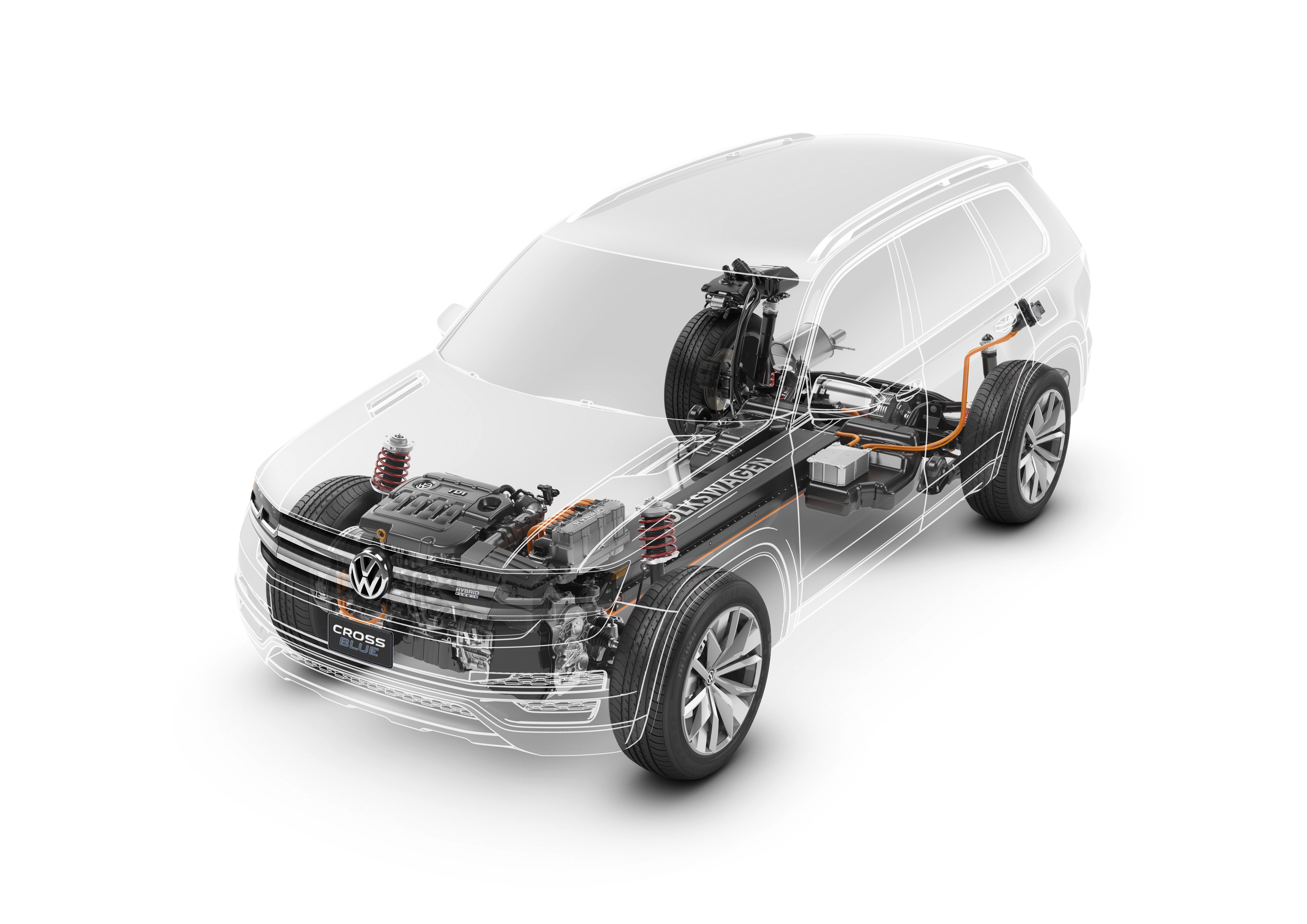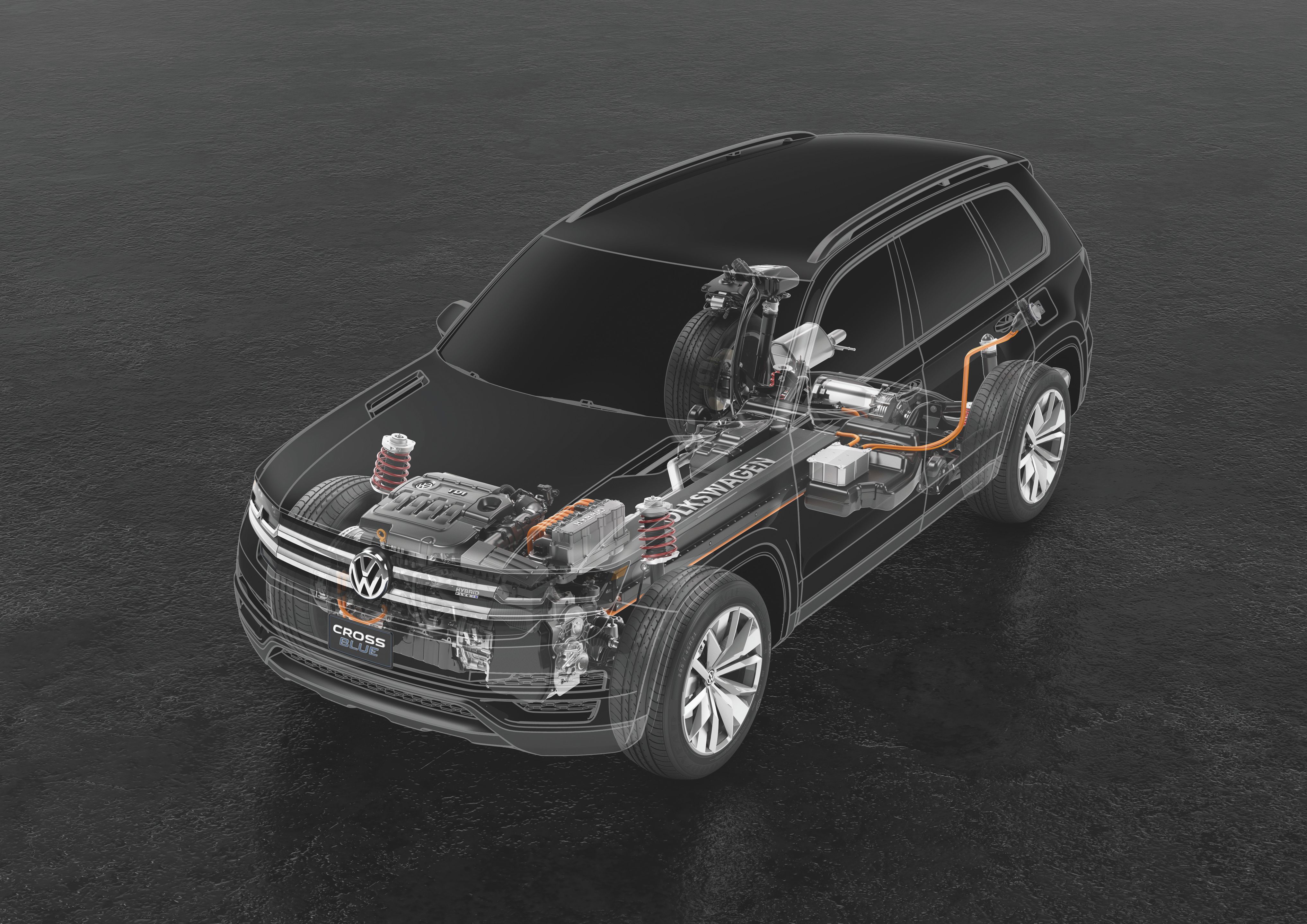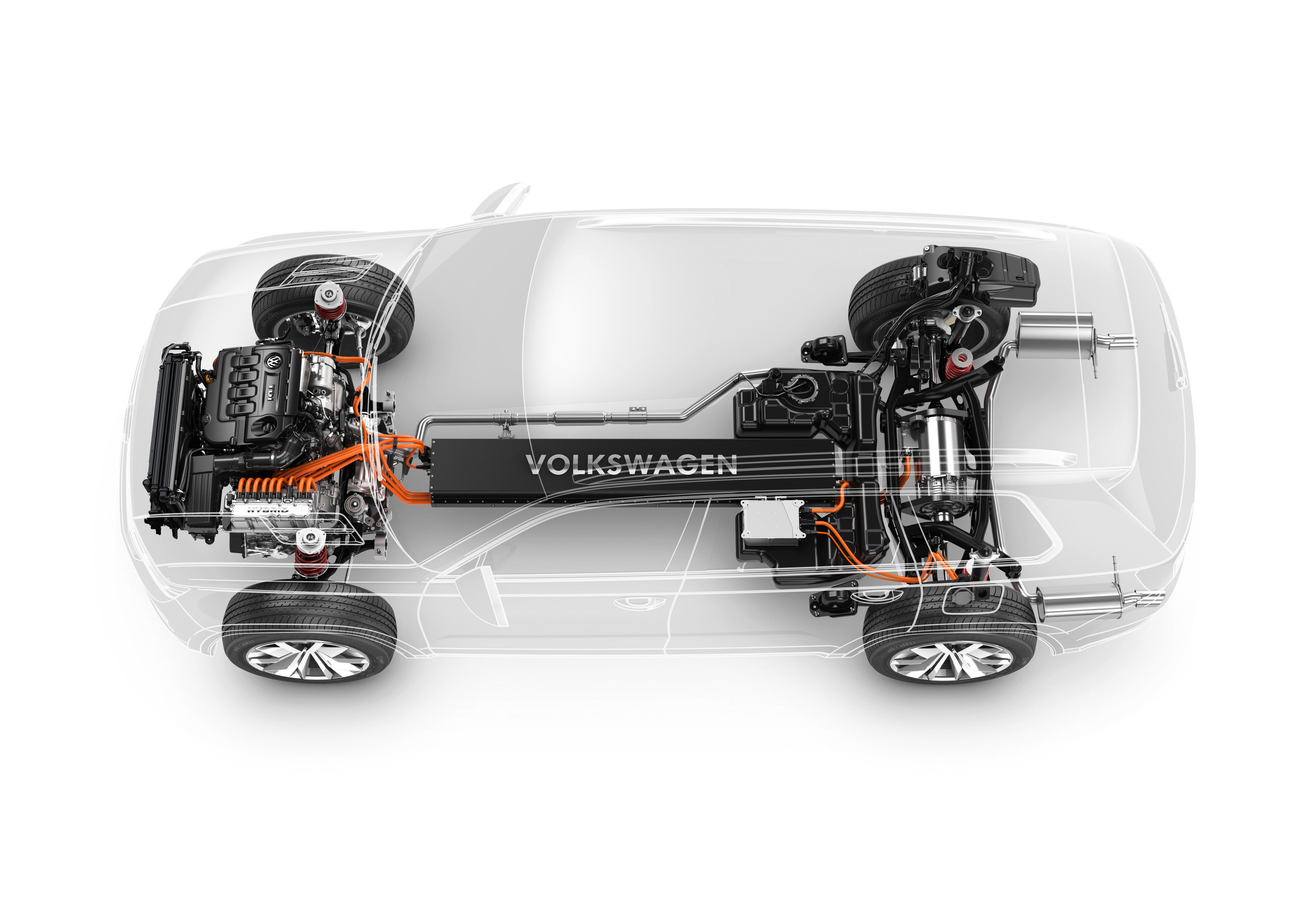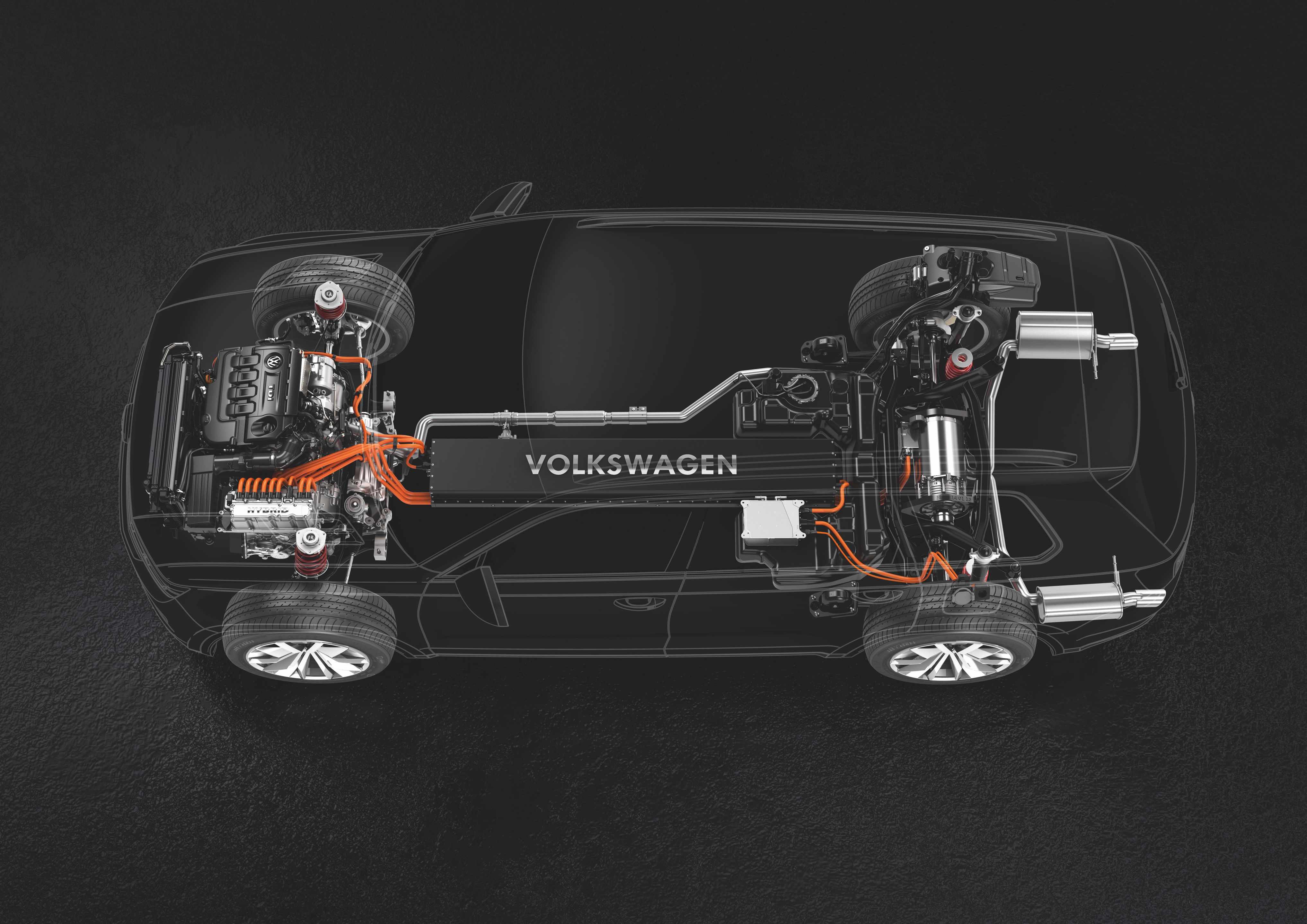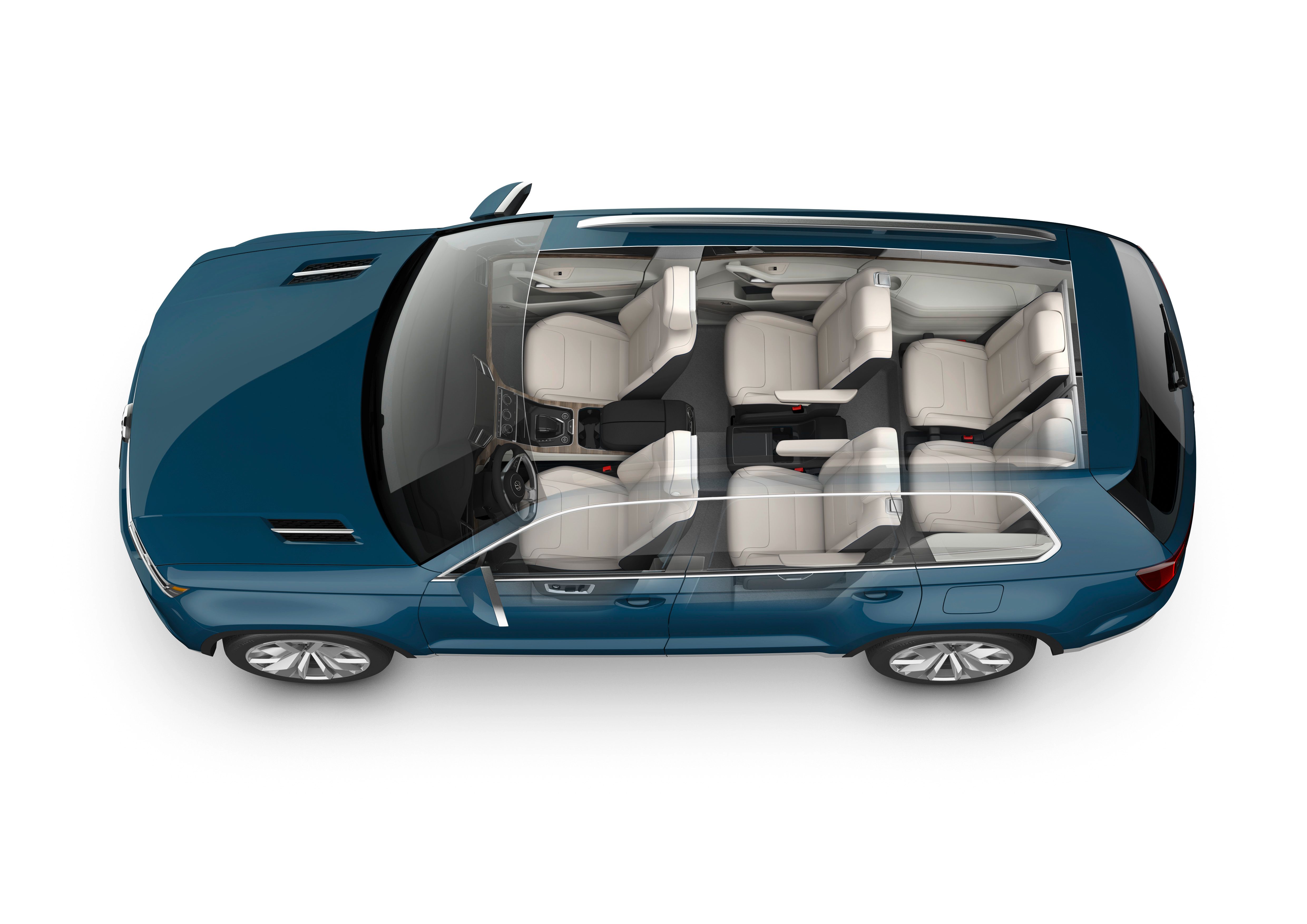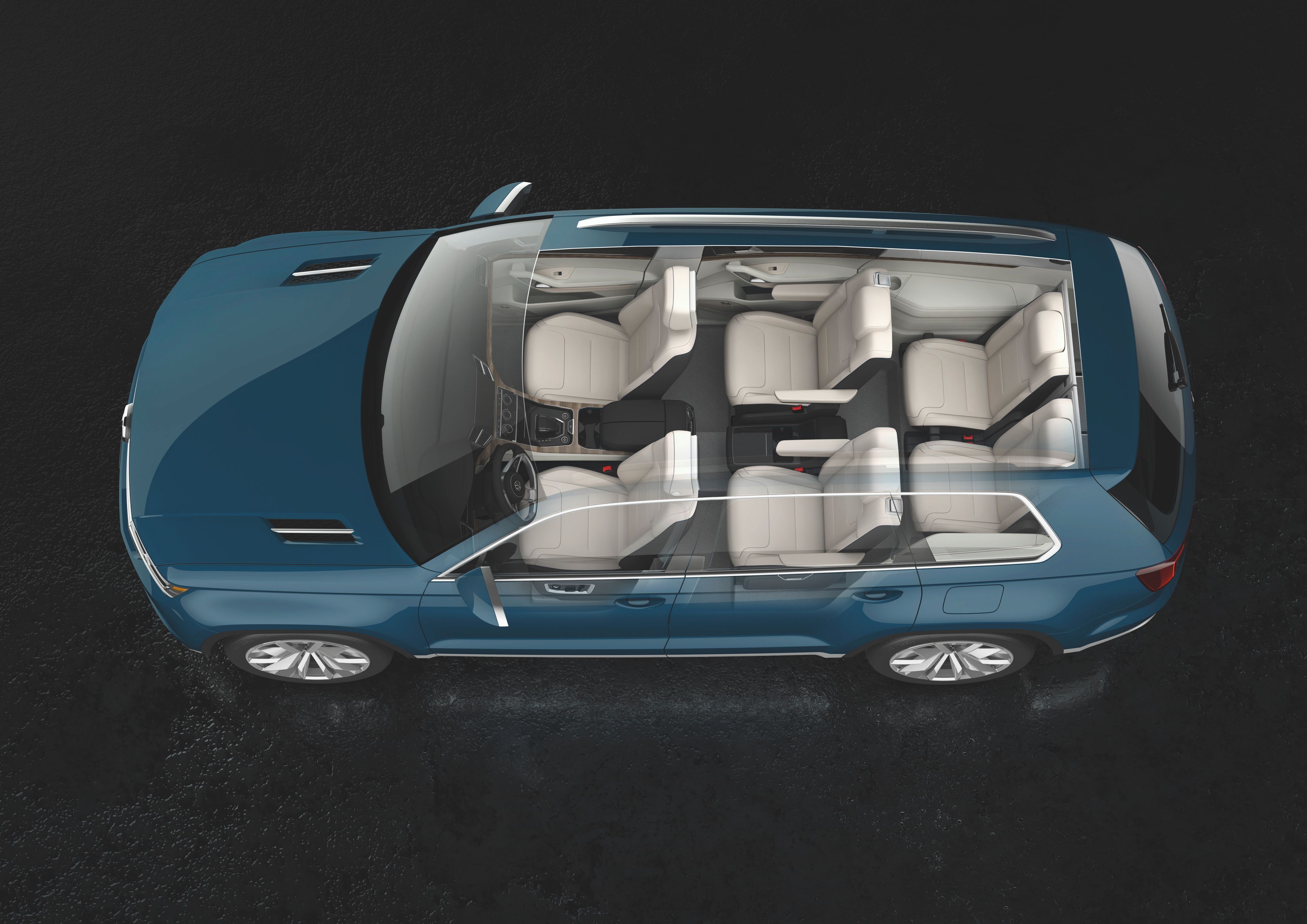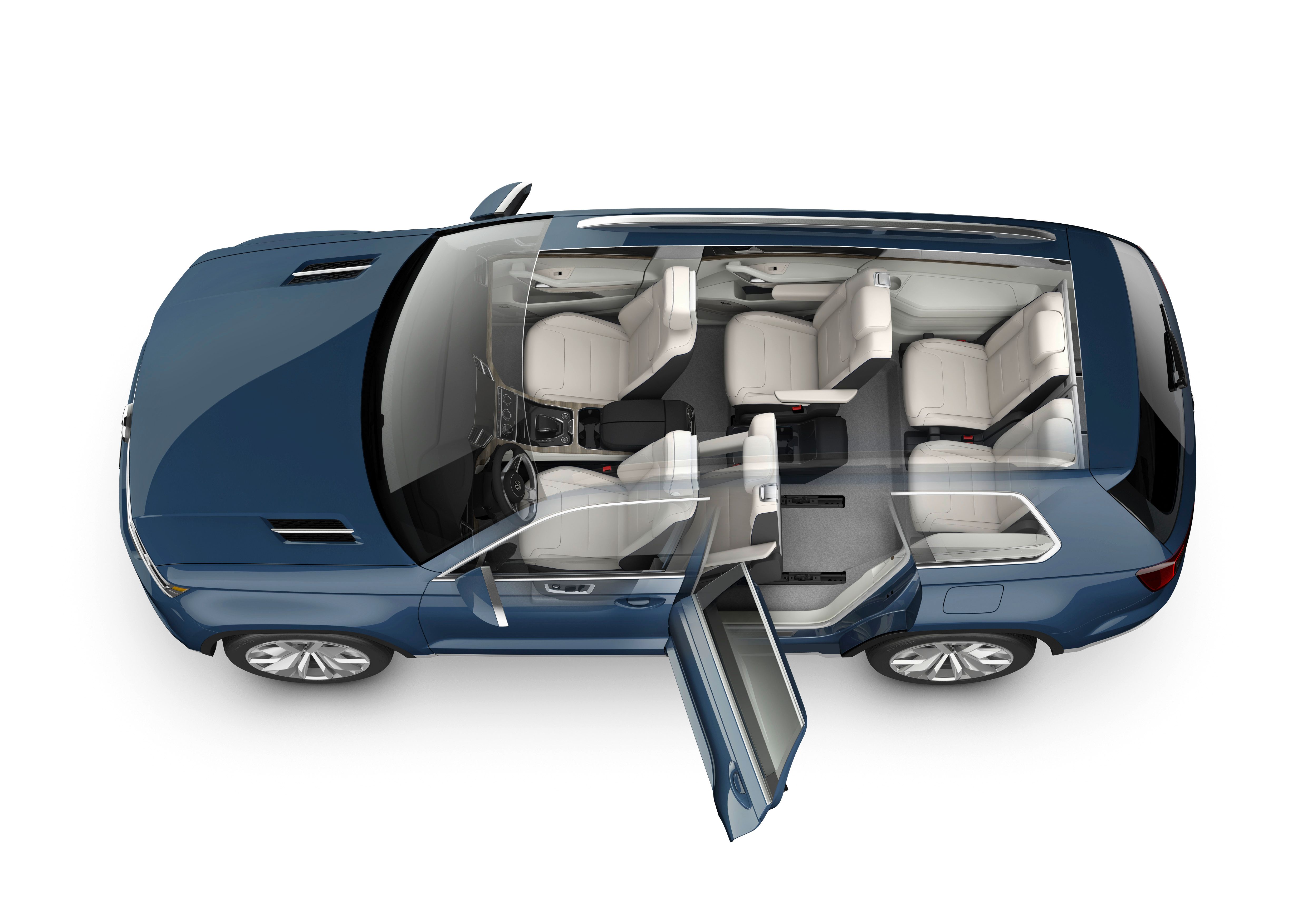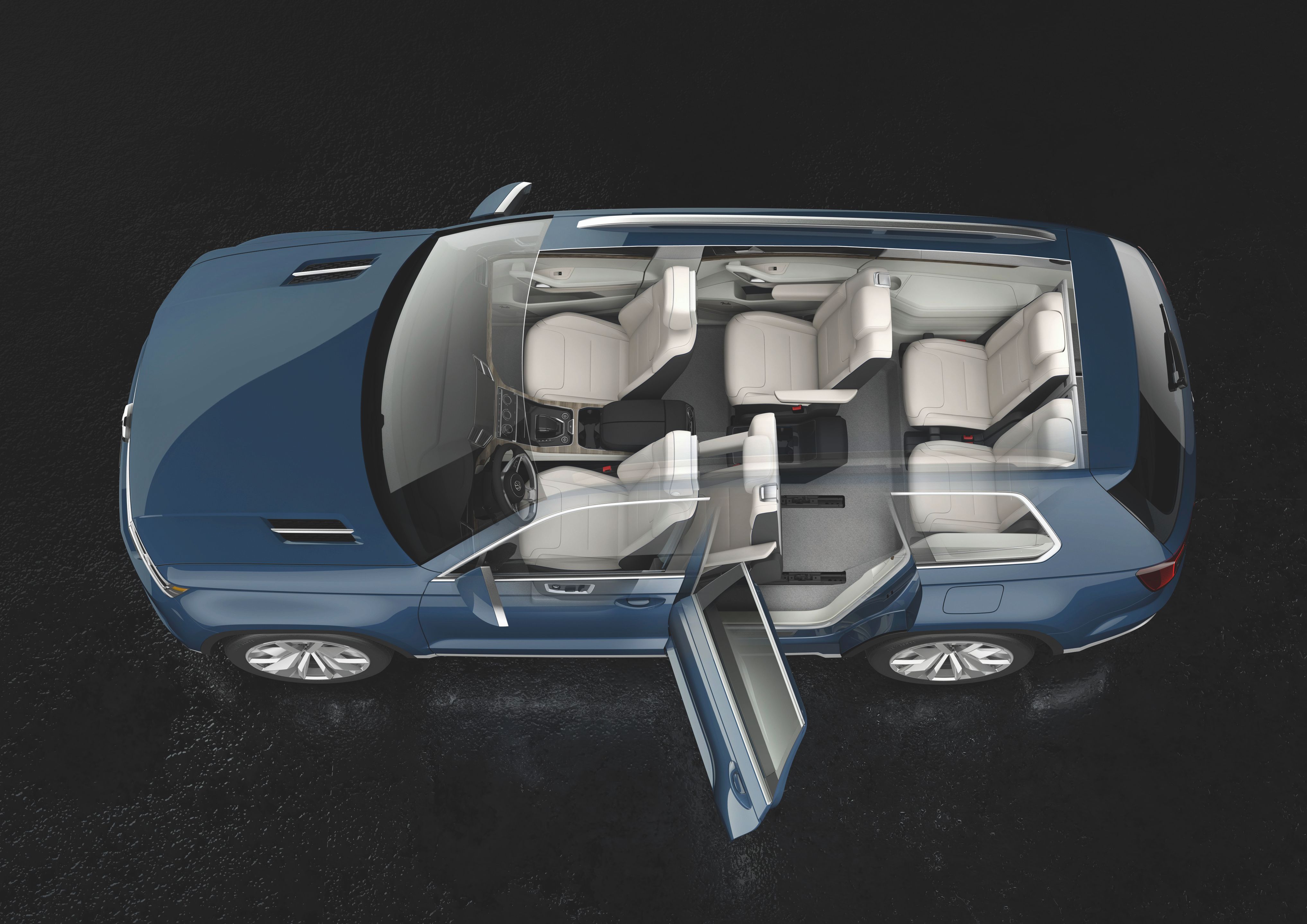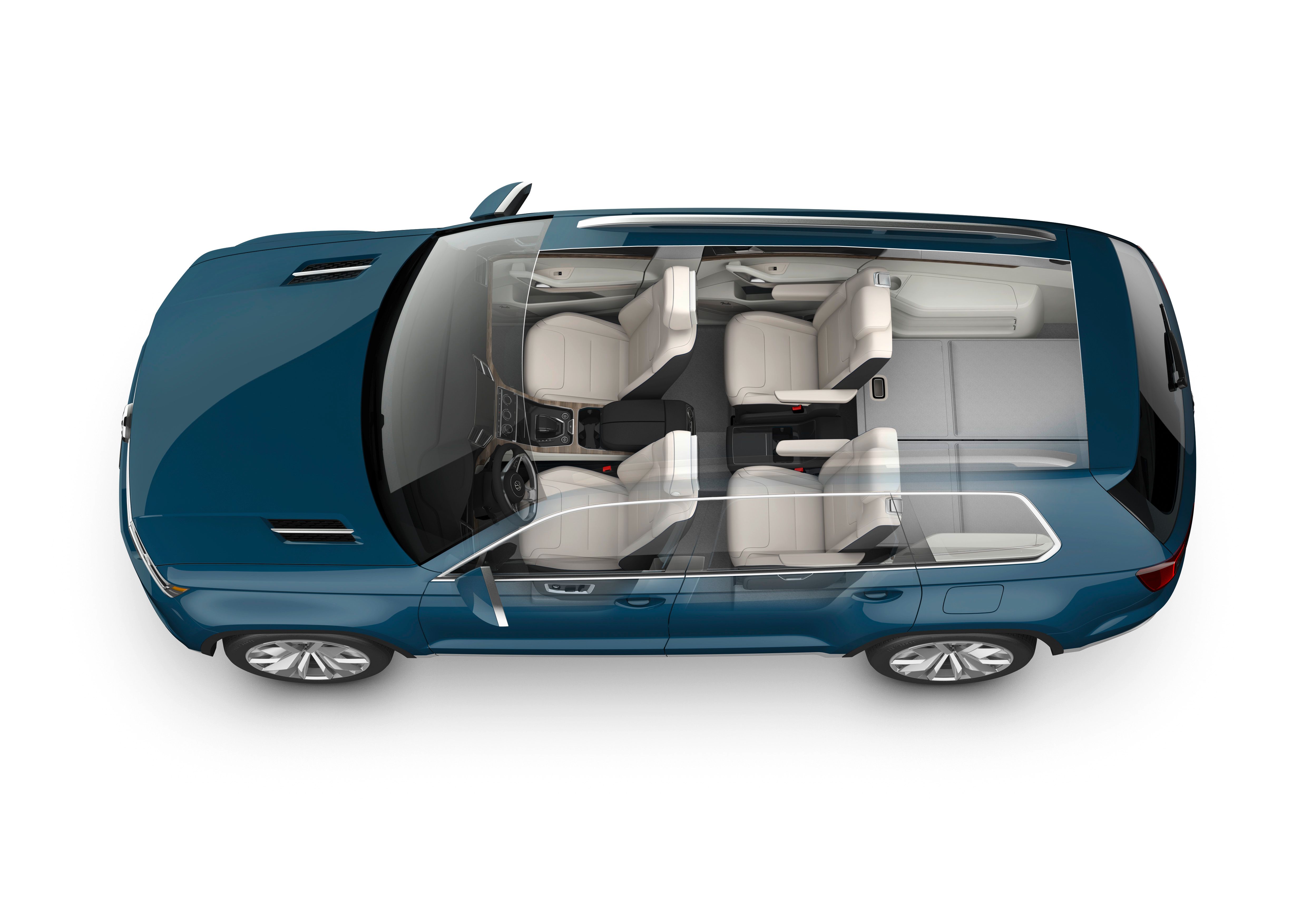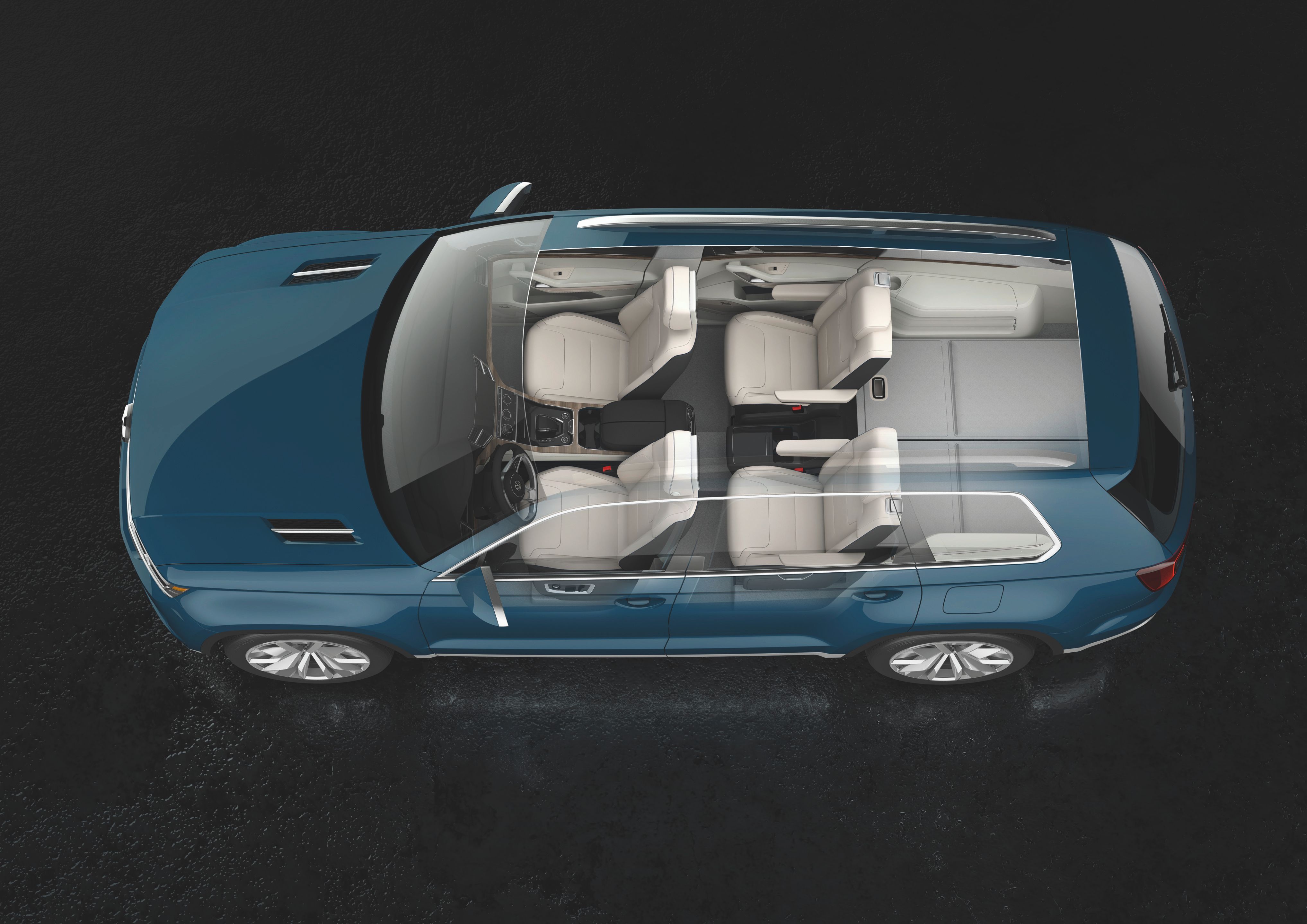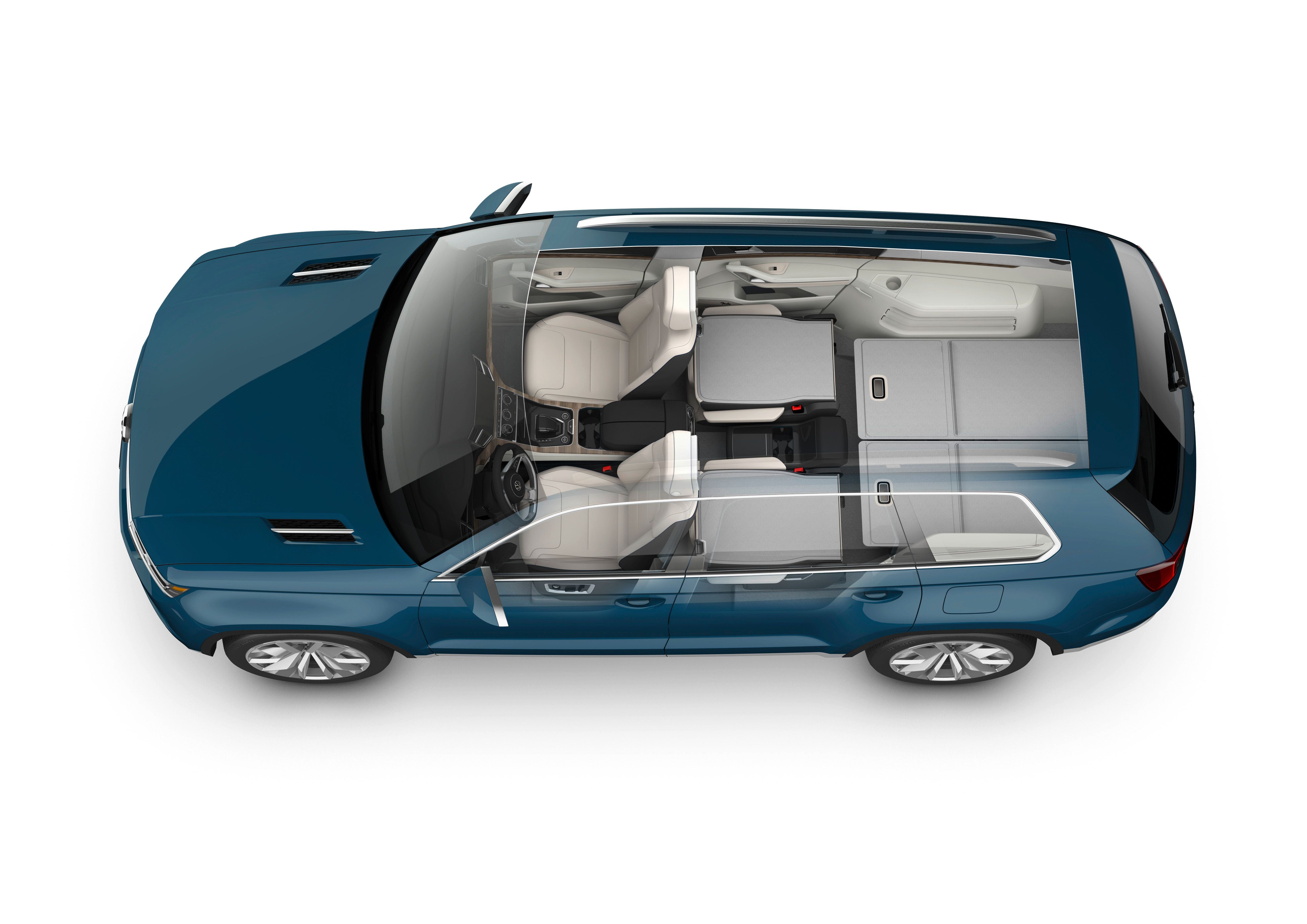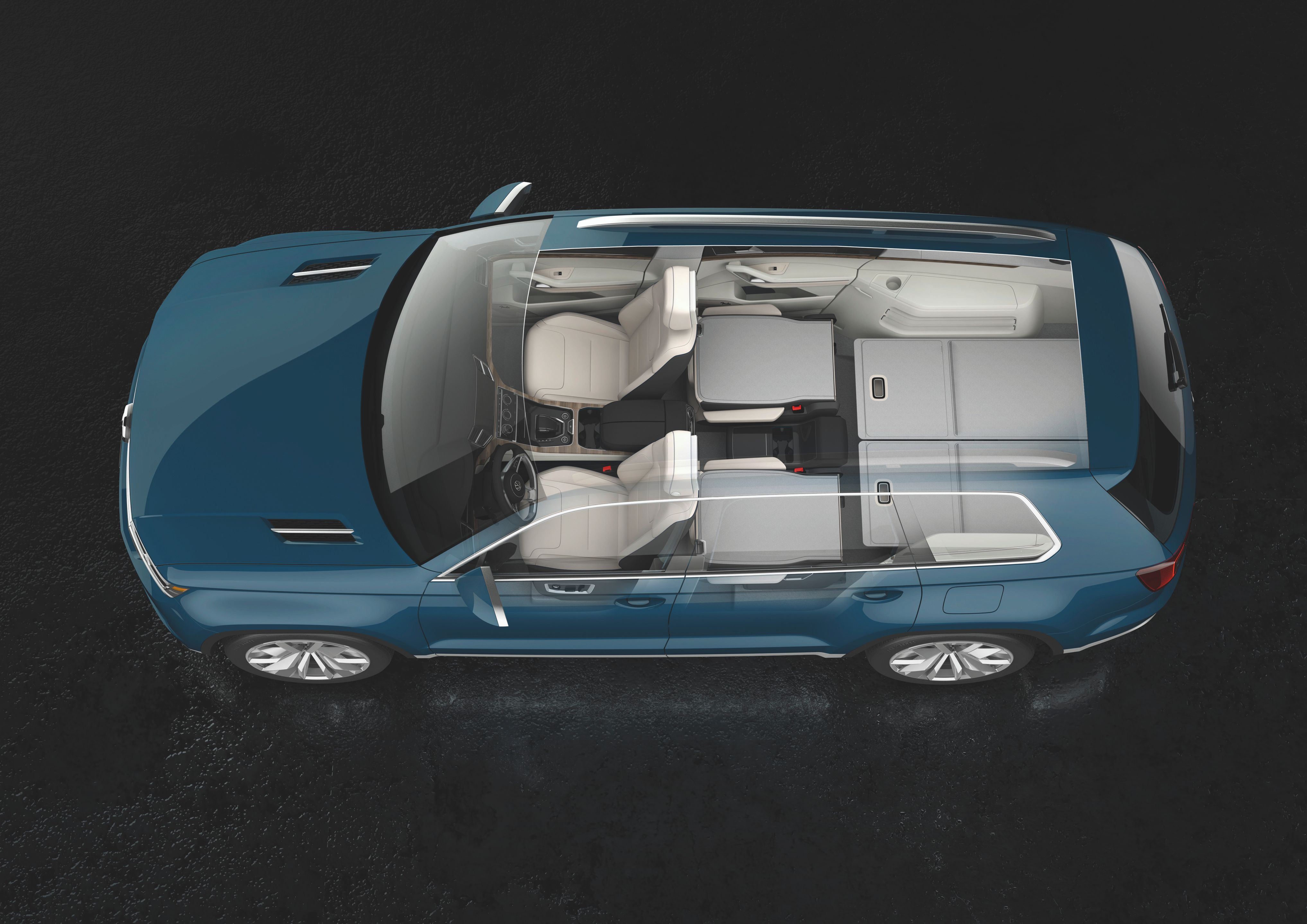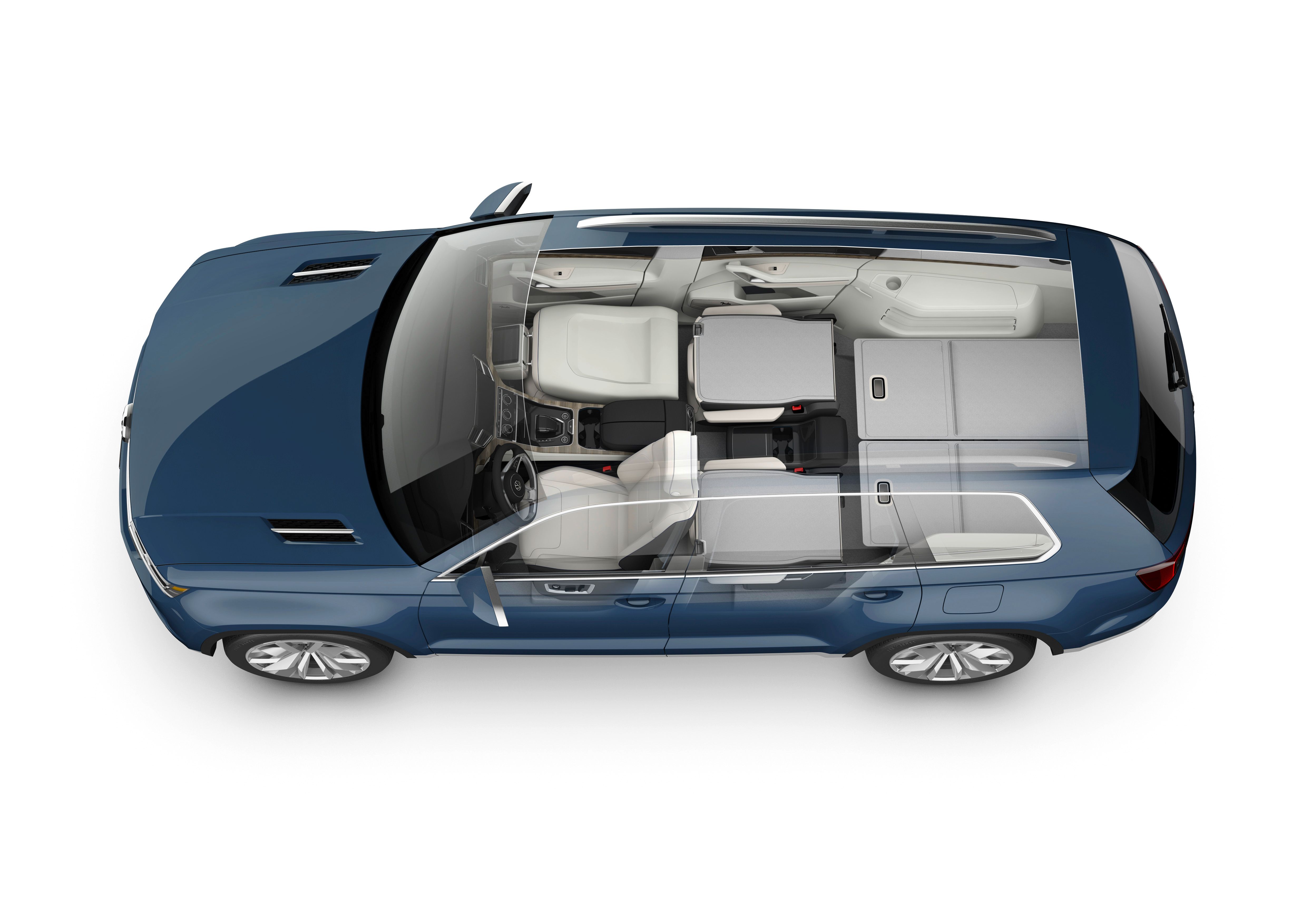Displaying the kind of new technology they're developing over there in Germany, Volkswagen->ke94 is headed to the 2013 North American International Auto Show->ke222 with an SUV concept that could very well be the peg for which VW bases their future production models on.
It's called the CrossBlue Concept and by the sheer level of technology used on this SUV, you'd think that this is going to be all-conquering machine that can survive the apocalypse.
We're not going to go that far because the CrossBlue is still, after all, a concept and any talk of production is still up for debate. Be that as it may, there's plenty to like about the CrossBlue - and a few things not to like about it - a lot of which involves the highly sophisticated powertrain that makes use of a diesel engine, a hybrid system, and electric motors.
Find out more about the Volkswagen CrossBlue Concept after the jump
2014 Volkswagen CrossBlue Concept
- Make: Array
- Model: 2014 Volkswagen CrossBlue Concept
- Engine/Motor: hybrid engine
- Horsepower: 302
- Torque: 516
- Transmission: six-speed DSG
- [do not use] Vehicle Model: Array
Exterior
Measuring 4,987 mm (196.3 inches) long, 2,015 mm (79.3 inches) wide and 1,733 mm (68.2 inches) tall, and painted with a CrossBlue Glass Flake finish, the first thing you'll notice about the CrossBlue Concept is that it's really big and masculine. And, well, you get the picture.
There's nothing chic about this SUV, whose emphasis on its dominant track widths, dynamic proportions, long and wide hood, and large wheels, makes for an imposing ride.
The CrossBlue’s prominent and long hood of isn't so much a visual trick as it is a necessity when we start talking about the powertrain options for the SUV. That hood also integrates air inlets for the engine while a long roof line with the short front overhang adds to the aesthetics of the SUV. Character lines are also prominently displayed, providing the stylish aggression that the CrossBlue has to the hilt.
The SUV's lights are also something worth talking about, particularly Volkswagen's use of horizontal lines at the front and rear of the vehicle that adds to the character trait of the CrossBlue at an expense, at least as far as we're concerned. The radiator grille, which was created using two solid aluminum struts and a centrally positioned VW logo, extends into the headlights. We understand the idea behind this, but the idea of the aluminum struts framing the dual headlights is a little weird for us. Sure, there's a wider feel to the car, but it sort of drowns out the headlights.
Fortunately, that isn't the case in the rear of the CrossBlue. There are still the three-dimensionally sculpted LED taillights with aluminum elements, but from a styling perspective, you can definitely make out the tail lights and their "E" design that opens toward to the vehicle centerline. The use of aluminum accents on the rear lights is the right kind of balance that Volkswagen should've probably used in front. But hey, it's their design.
Fuel doors are also unique characteristics of the CrossBlue. They're called fuel doors because the filler neck for the diesel tank and SCR reservoir is located on the passenger’s side rear door while on the driver’s side, engineers integrated two electrical sockets behind the fuel door. The first socket is used to charge the lithium-ion battery while the second can be used to connect numerous electrical devices, including electric coolers or light systems for camping, allowing the CrossBlue to actually act as an auxiliary electrical generator.
The stainless steel tailpipes are also distinctively displayed and integrated in a trim panel with underbody protection that runs horizontally across the lower section at the rear.
The final piece to the CrossBlue's exterior puzzle are the bumpers, which Volkswagen designers went to great lengths to ensure even the smallest of details are taken care of. The air inlets in the bumper, in particular, are a key detail, trimmed by horizontally mounted, black-painted elements that actually reveal themselves as a three-dimensional honeycomb structures. Just beneath the bumper, the front end is terminated by trim in stainless-steel look with integrated underbody protection.
Interior
One of the best qualities of the CrossBlue is the spaciousness of its interior, even with the model having to account for six individual seats, or seven seats as an option in the production model. The rear seats are slightly elevated, giving those seated in the back a chance to enjoy the better view. Headroom is also very good, while the same can be said for the legroom. That's good news for those tall and lanky adults who value being able to sit down comfortably inside a car without having to resort to contorting their bodies.
Cargo space is also a point of pride for the CrossBlue, thanks to 335 liters (11.8 cubic-feet) worth of cargo capacity just behind the third seating row. When you decide to fold the seats in the third row, that space increases to 812 liters (28.67 cubic-feet) with a load length of 1,387 mm (54.60 inches). If the third-row seats aren't enough, you can also fold the second row seats, further increasing the cargo capacity to nearly 2,000 liters (70.6 cubic-feet). Talk about multi-functionality, right?
More than just being a picture of space, the CrossBlue‘s interior is pretty impressive, as it’s highlighted by leather and wood finishes installed throughout the cabin. The wood accents are especially distinctive with Volkswagen using dark-stained banana-tree wood with the lines of these wood accents “flowing” from the sporty gear shift panel, ascending into the center console and across the lower instrument panel to the door trim. Meanwhile, dark "Marble Grey" leather was used in the area of the two-part center armrest while leather trim pieces and fabrics in “St. Tropez” – light-beige – can be found just beneath the wood accents and as seat upholstery.
Infotainment
The use of high-end leather on the CrossBlue's cabin is complemented by the German automaker's decision to integrate contemporary technologies , including a 10.2-inch touchscreen that not only serves the purpose of controlling the SUV's entire infotainment functions, but can also be used to access information regarding the SUV's hybrid system. The infotainment system also has a 3D display of either the navigation route or media center contents.
In the first seating row’s head restraints you'll find a number of iPad minis, ensuring that guests sitting in the rear enjoy the full breadth of entertainment and online features to keep themselves busy while out and about on the road. Finally, a high-end Fender sound system was also installed, rounding out what has become a high-quality interior cabin full of useful components.
Performance
As a hybrid, the CrossBlue carries what it says is an "alliance" of TDI and E-motor -- two engine components that are distinctly made by Volkswagen. In the case of the concept version, the vehicle makes use of a TDI diesel engine that produces 190 horsepower and mates to a six-speed DSG transmission. The engine is combined with a lithium-ion battery in the center tunnel, a front E-motor with 40 kW, and a rear E-motor with 85 kW. Incidentally, this is the same kind of powertrain that the German automaker used in the Cross Coupé concept.
With the engine in tow, the CrossBlue can hit from 0 to 60 mph in just 7.2 seconds with a top speed of 127 mph while achieving an estimated 89 MPGe in the four-wheel-drive SUV. With the SUV in pure-diesel operation, fuel economy is at 35 MPG combined for city and highway driving while in the test cycle of the R101 European ECE standard for electric hybrid vehicles, the concept vehicle attains an estimated fuel consumption of 2.1 liters of fuel per 100 km (112 mpg).
Torque numbers for the TDI comes in at 400 Nm (295 pound-feet) from low revs at 1,750 rpm while the E-motors contribute 180 Nm (132 pound-feet) in the front and 270 Nm (199 pound-feet) in the rear. All in all, when the power of the CrossBlue is fully used, the drive system can produce a staggering total of 700 Nm (516 pound-feet) of torque.
The sophisticated engine setup of the CrossBlue lends it to being driven in a variety of ways, including power being used solely by its lithium-ion battery, allowing the SUV to cover a distance of up to 14 miles (U.S. test cycle) or 33 km (European NEDC testing) in all-electric driving. With this option, top speed hits only at 75 mph.
Drive Modes
The CrossBlue can be driven in a number of different ways depending on the operating modes you opt to use. The default mode is the classic hybrid mode, which manages the use of the drive sources. From there, a press of a button can lead to a switch to either Eco or Sport mode with the former carrying parameters that including the accelerator pedal characteristic and the A/C unit, which in its own way, is controlled for minimal fuel and electrical consumption.
Meanwhile, the latter Sport mode can be used by also pressing a button. This mode allows the CrossBlue to take advantage of the drive system’s maximum power potential.
Then, there's the E-Mode, of which only the 85 kW E-motor at the rear axle provides the power with the turbodiesel engine being decoupled from the drivetrain by opening the clutch, and the engine is shut off. The driver can then activate E-mode by a simple press of a button and when the need arises for the car to use its turbodiesel engine, it automatically re-engages within seconds.
As far as all-electric driving is concerned, the CrossBlue's E-motors are supplied with energy from one of the eight modules that make up the lithium-ion battery, which has an energy capacity of 9.8 kWh. The DC/DC converter then supplies the body electrical system with the 12-volt electrical power it needs.
Other available modes include an off-road mode that makes use of a permanent four-wheel drive system) and a charging mode.
Specifications
|
Overview |
|
|
Name |
CrossBlue |
|
Character |
Midsize SUV with diesel plug-in hybrid for six persons |
|
Fuel economy (EPA for plug-in hybrid vehicles) |
89 MPGe |
|
Fuel consumption (NEDC for plug-in hybrid vehicles) |
2.1 l/100 km |
|
Driving performance |
V/max 127 mph / 204 km/h |
|
V/max, electric 75 mph / 120 km/h |
|
|
Dimensions |
Length 4,987; width 2,015 mm; height 1,733 mm |
|
Track widths |
front/rear 1,686 mm/1,696 mm |
|
Drive units / power / transmission |
Turbodiesel 140 kW; E-motors: front 40 kW, rear 85 kW; System power (TDI + battery) 225 kW; 6-speed DSG |
|
Battery |
Eight lithium ion modules; energy capacity 9,8 kWh |
|
Drivetrain |
Front-wheel drive (via TDI and front E-motor); four-wheel drive (via TDI and E-motor(s)); rear-wheel drive (via rear E-motor) |
|
Driving modes |
E mode, Eco mode, Sport mode, Offroad mode, Charge mode |

